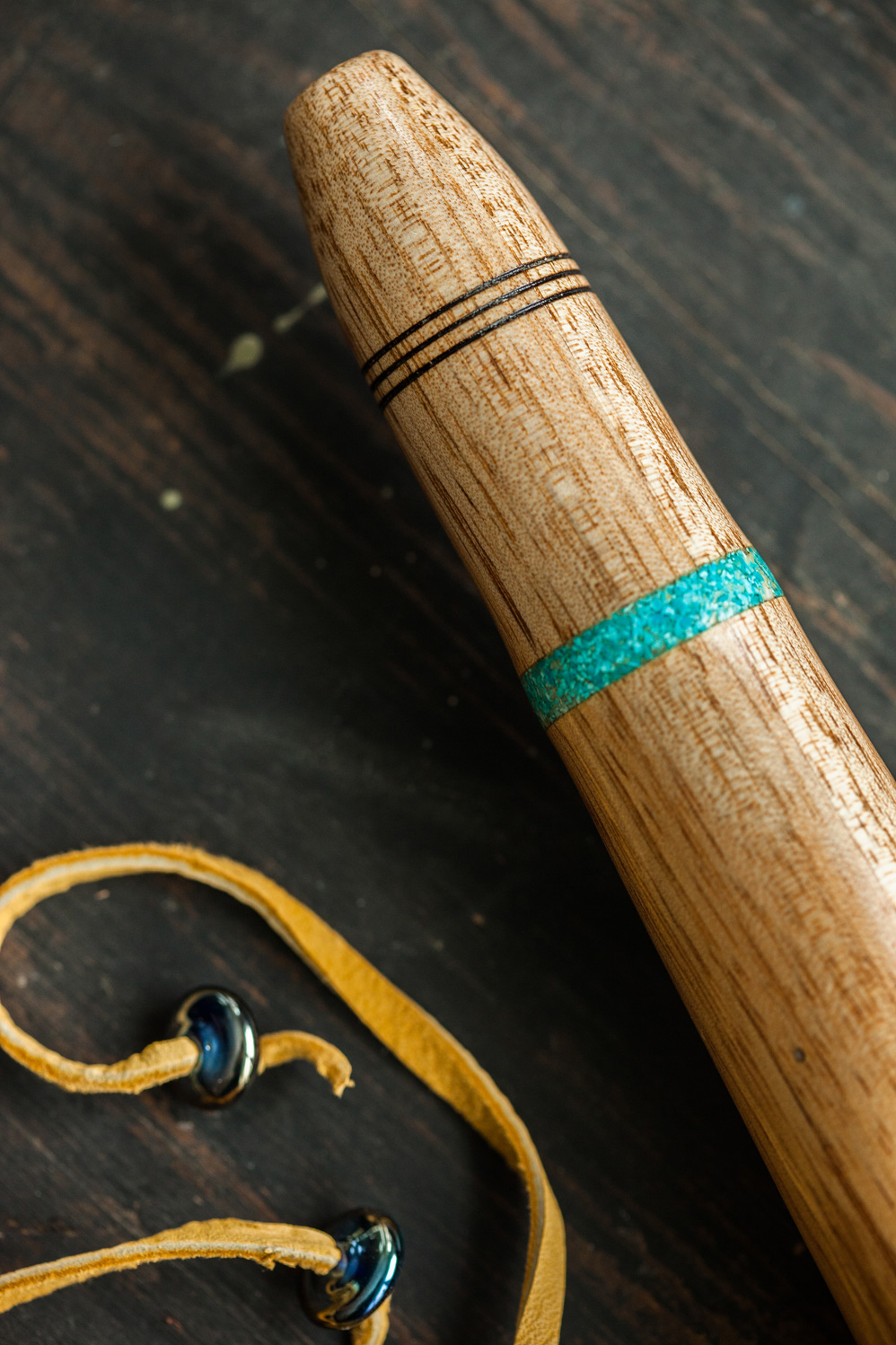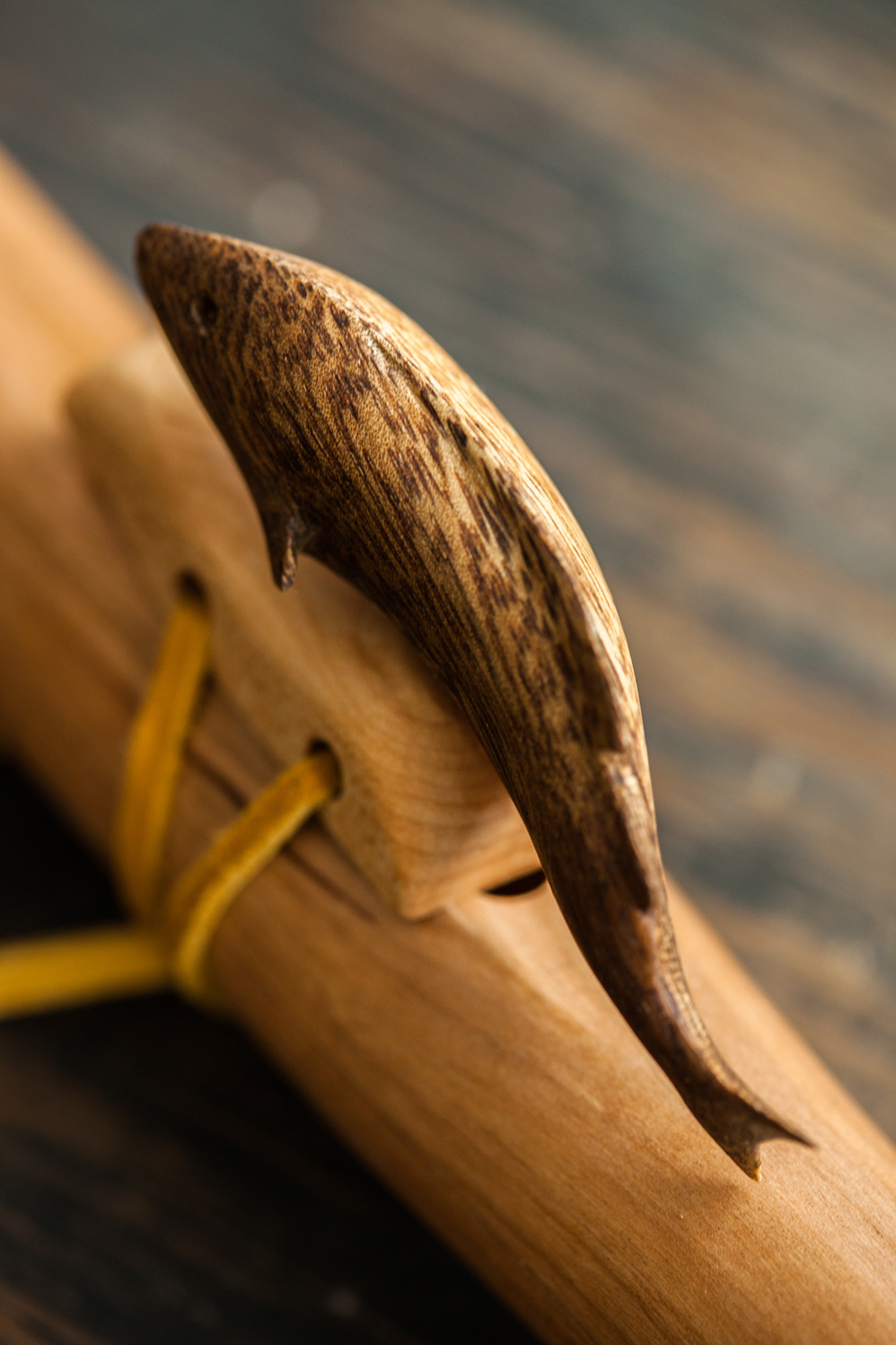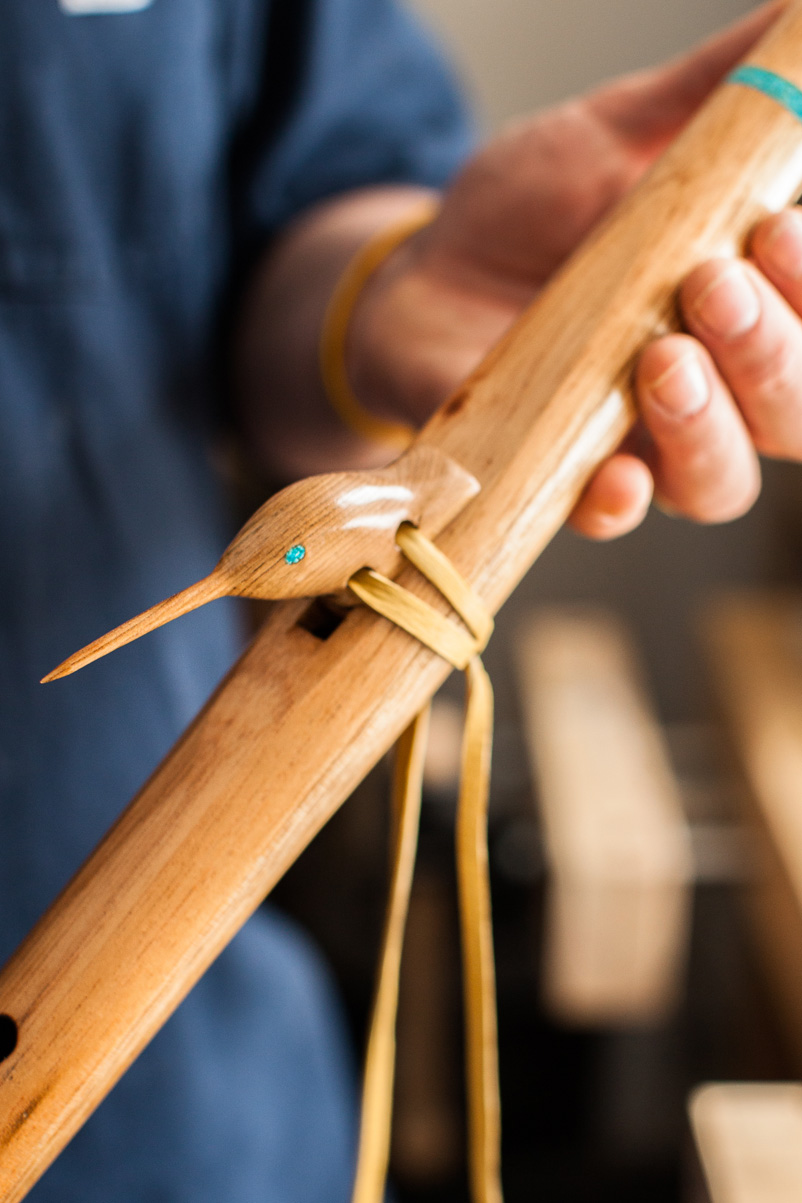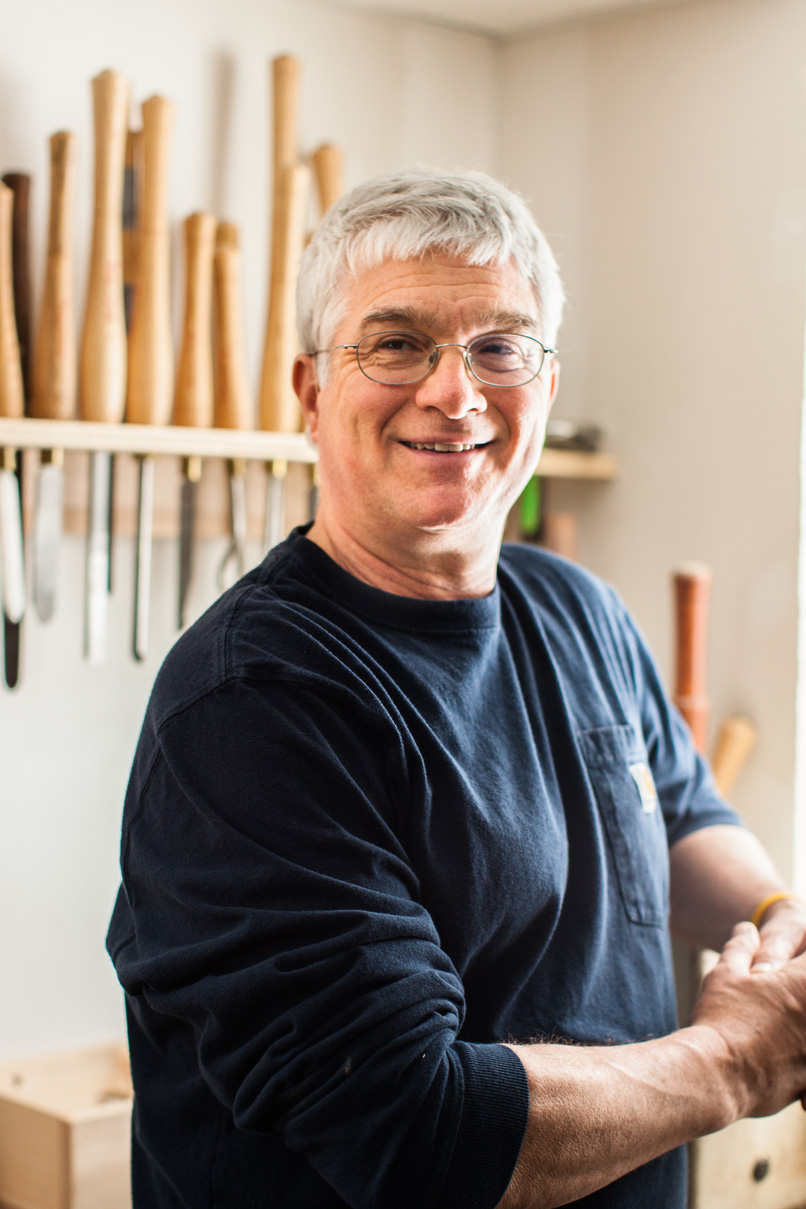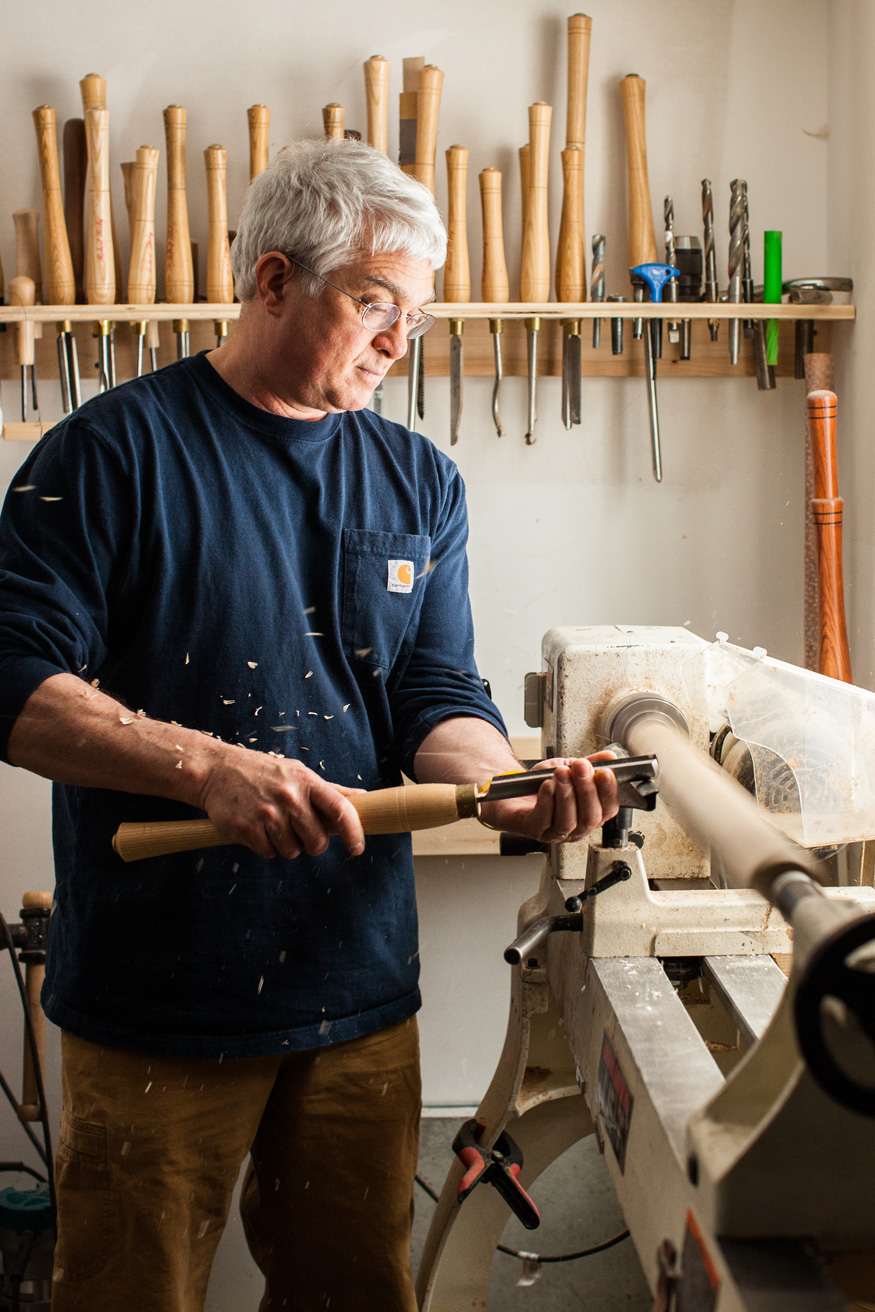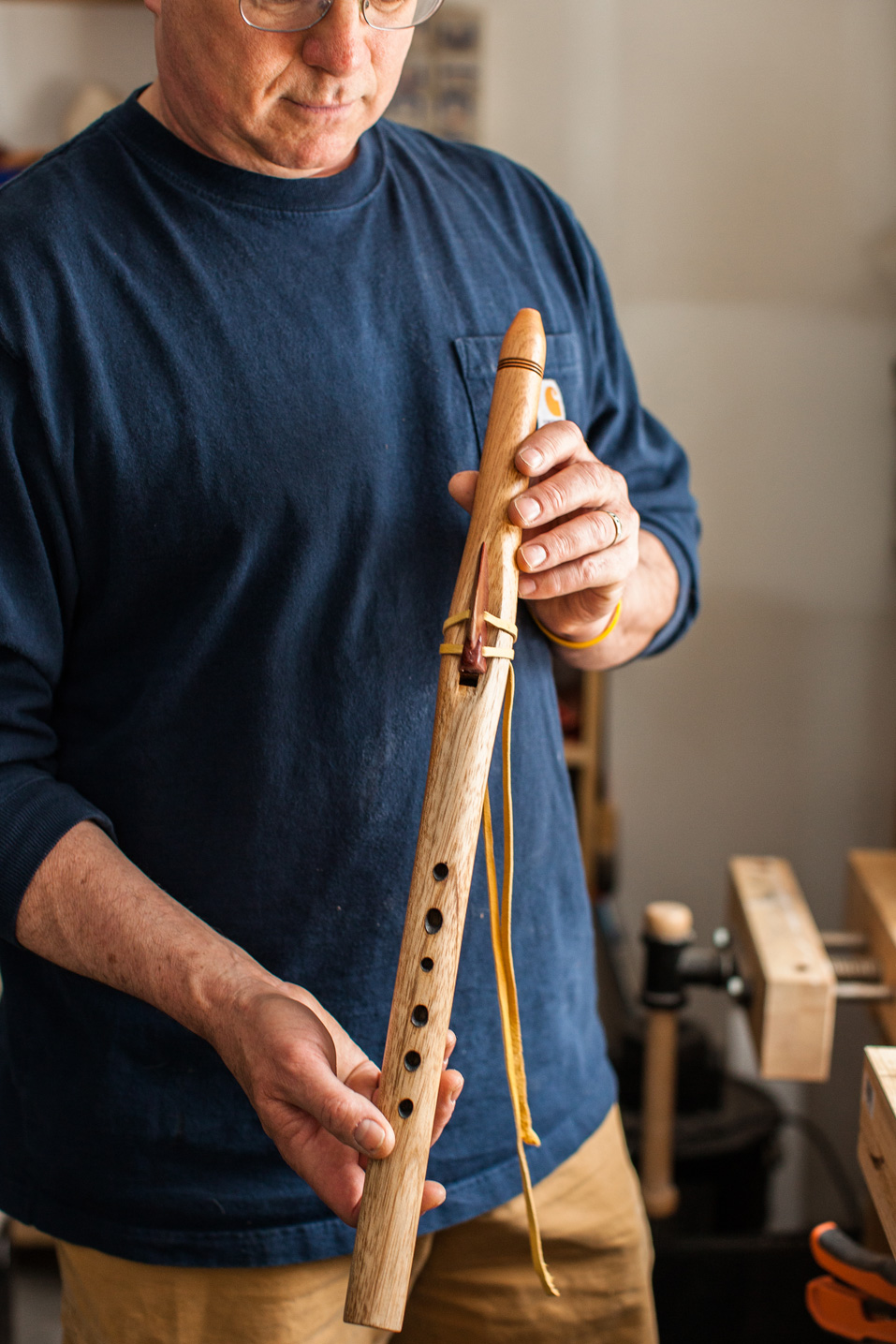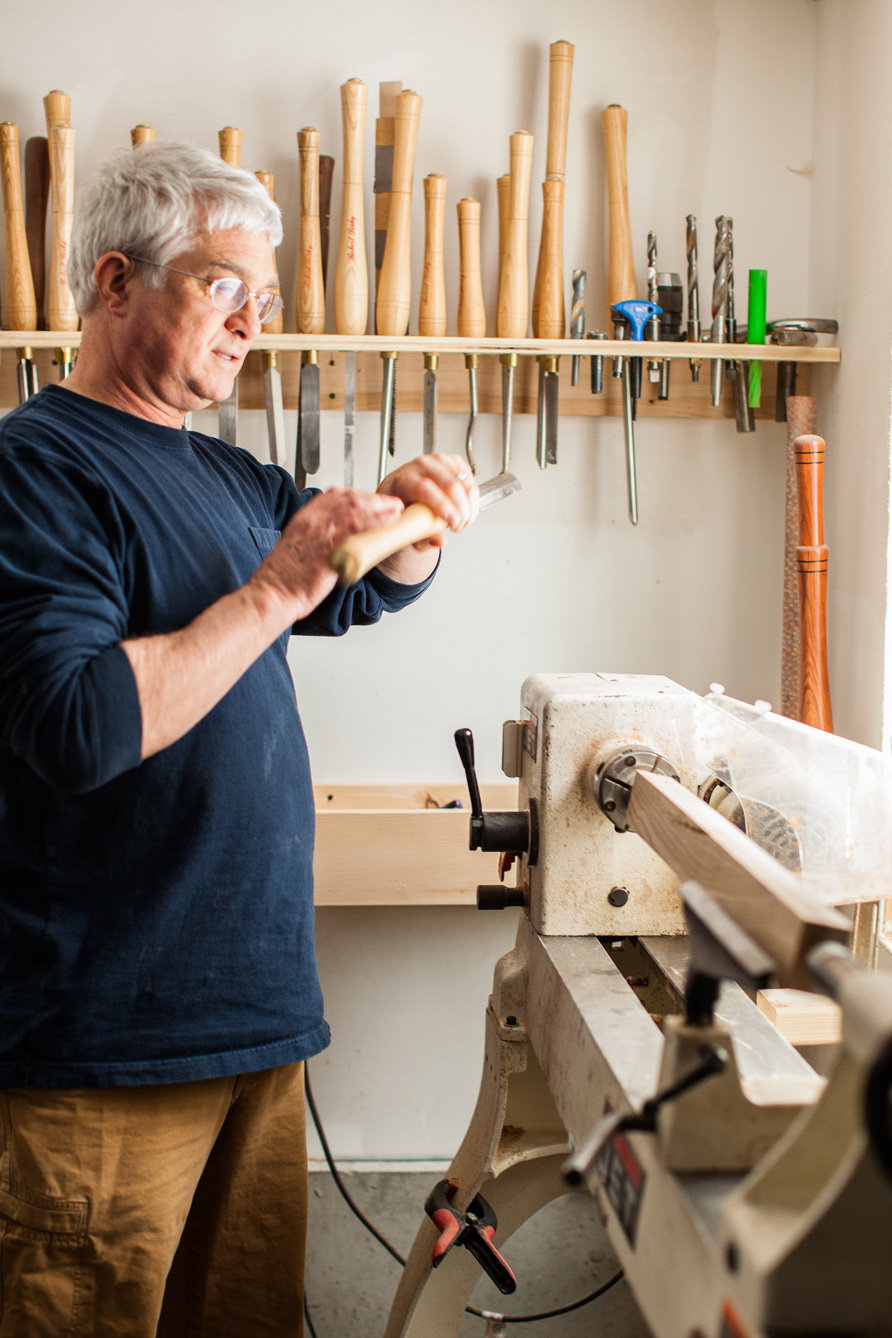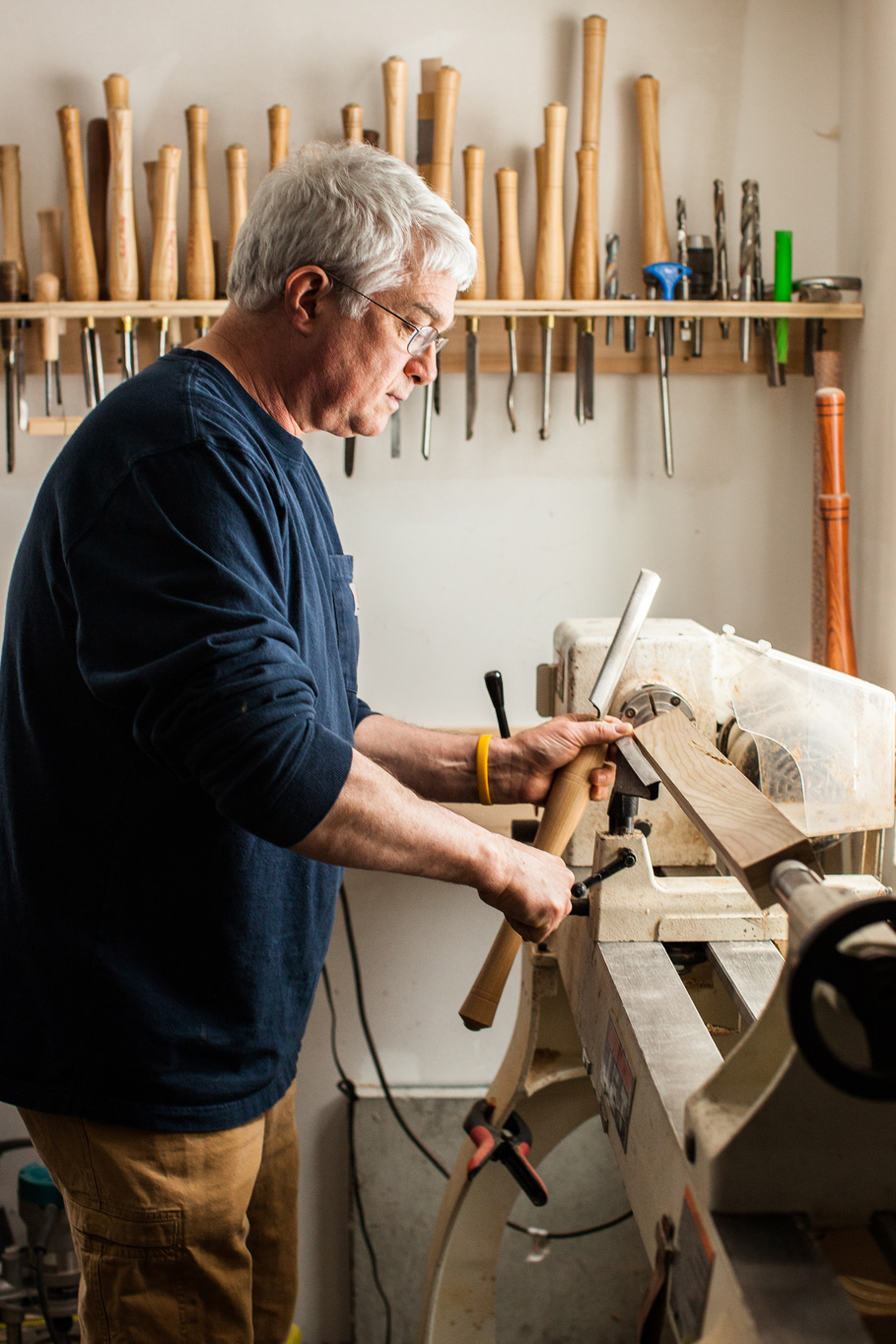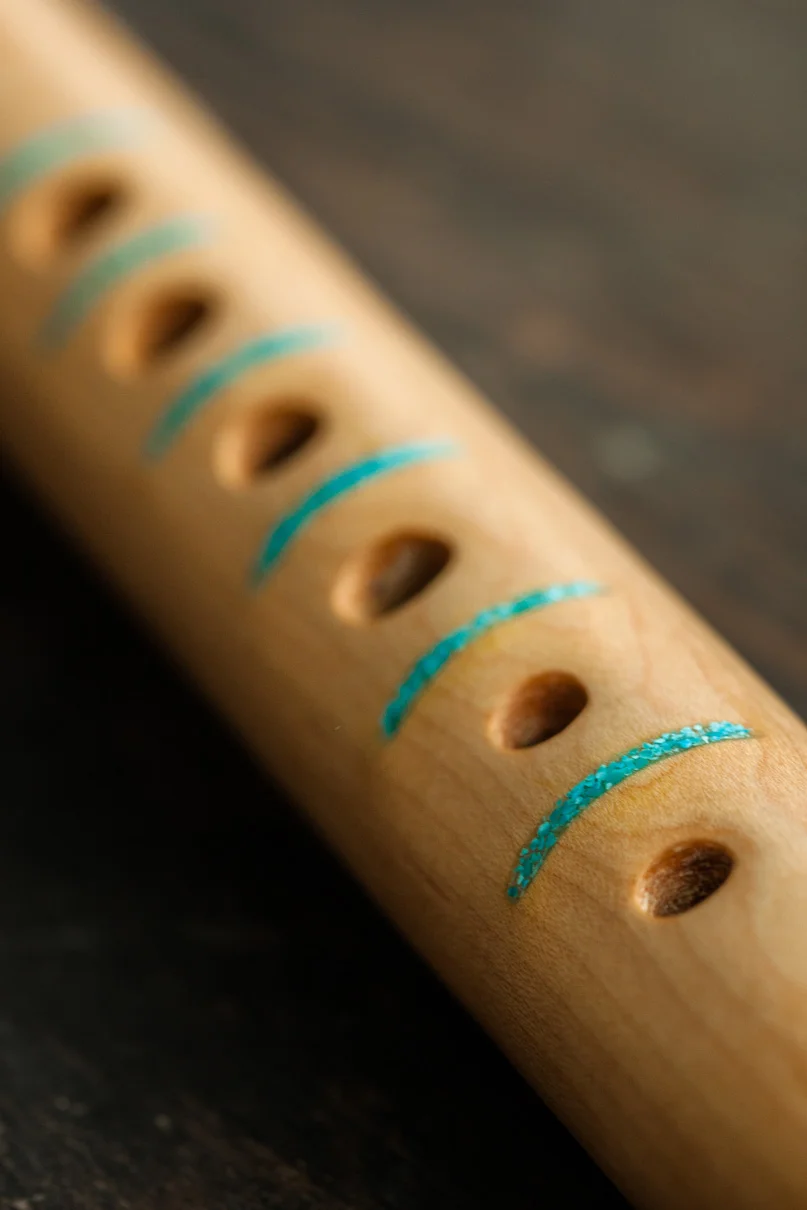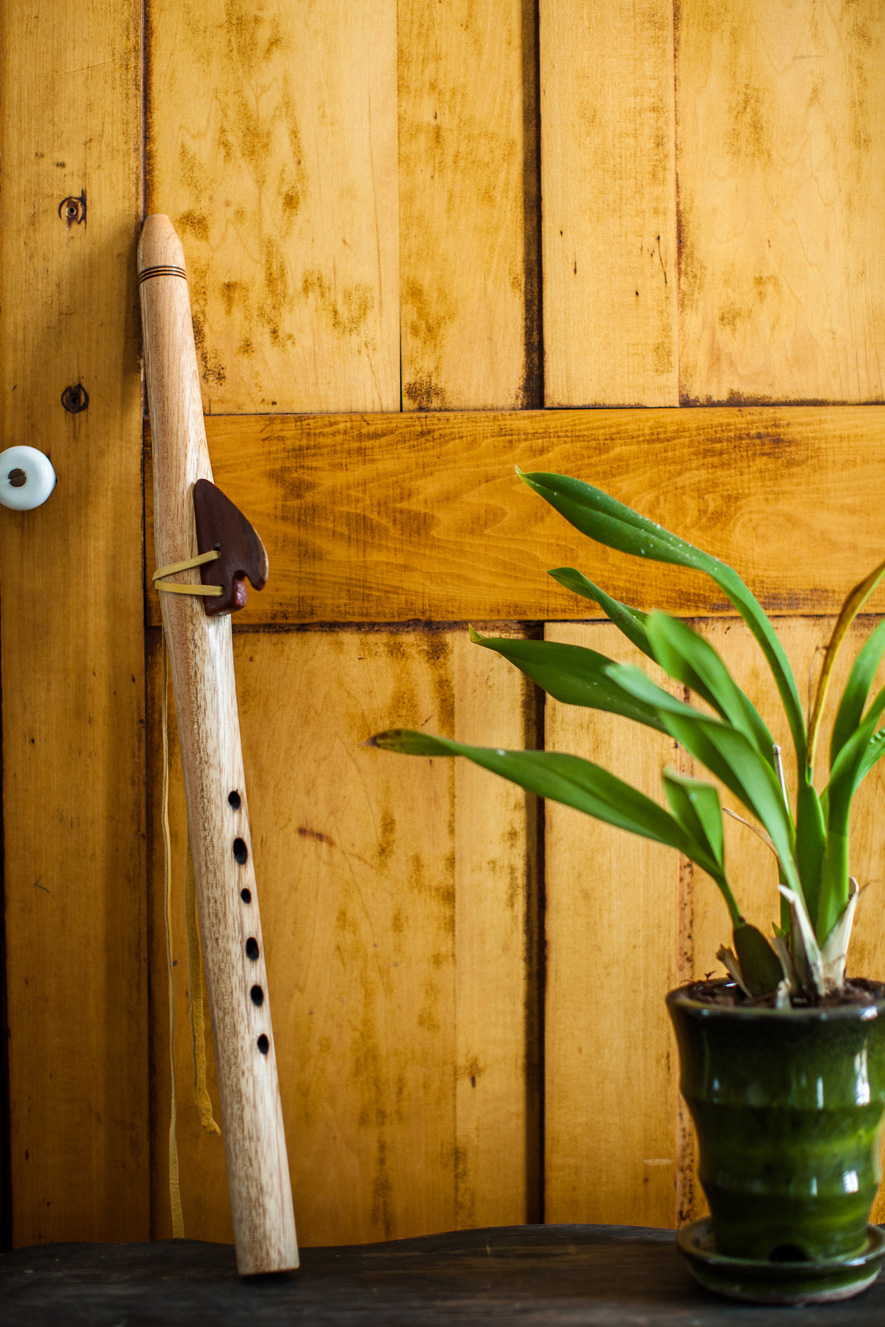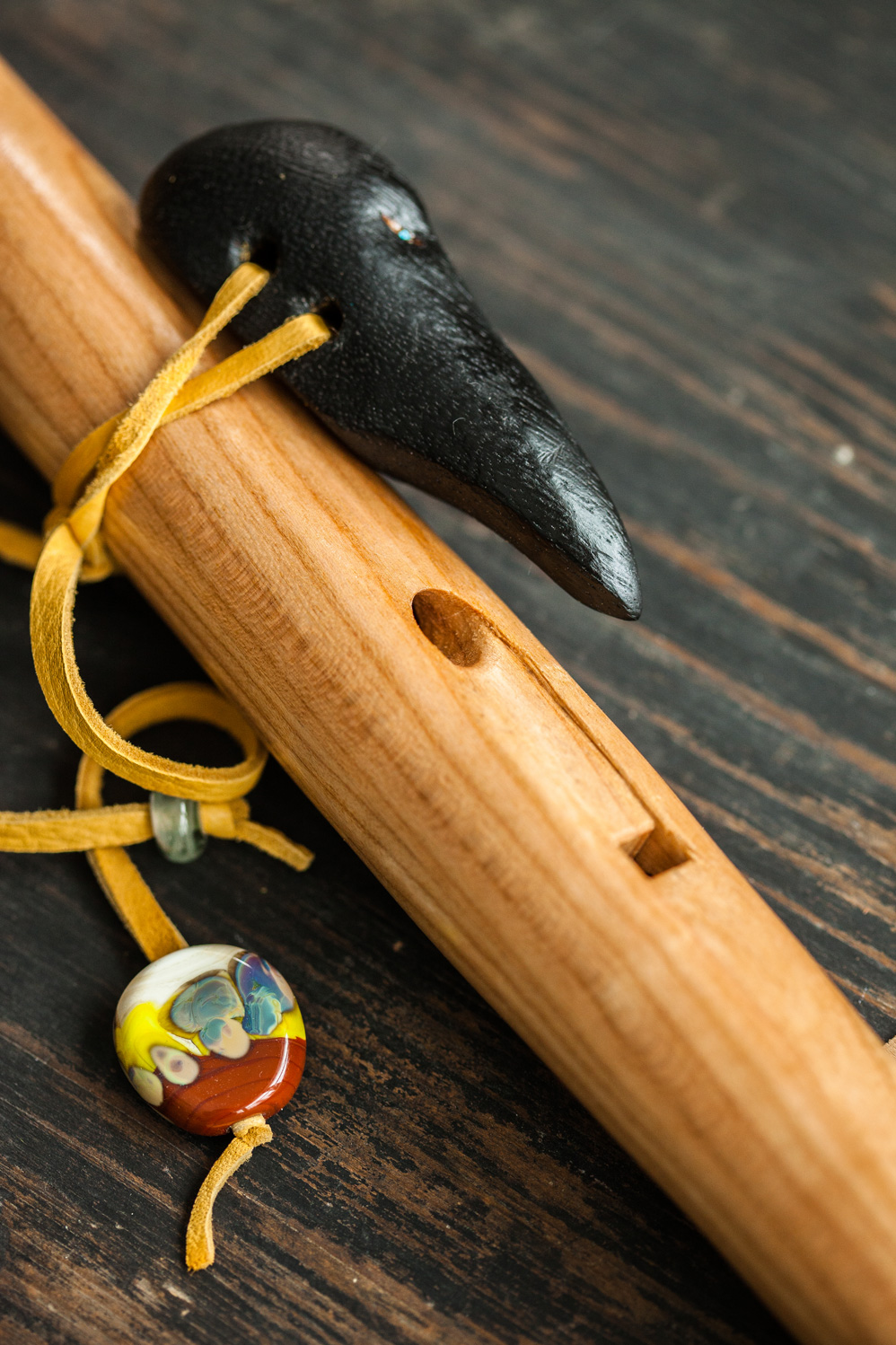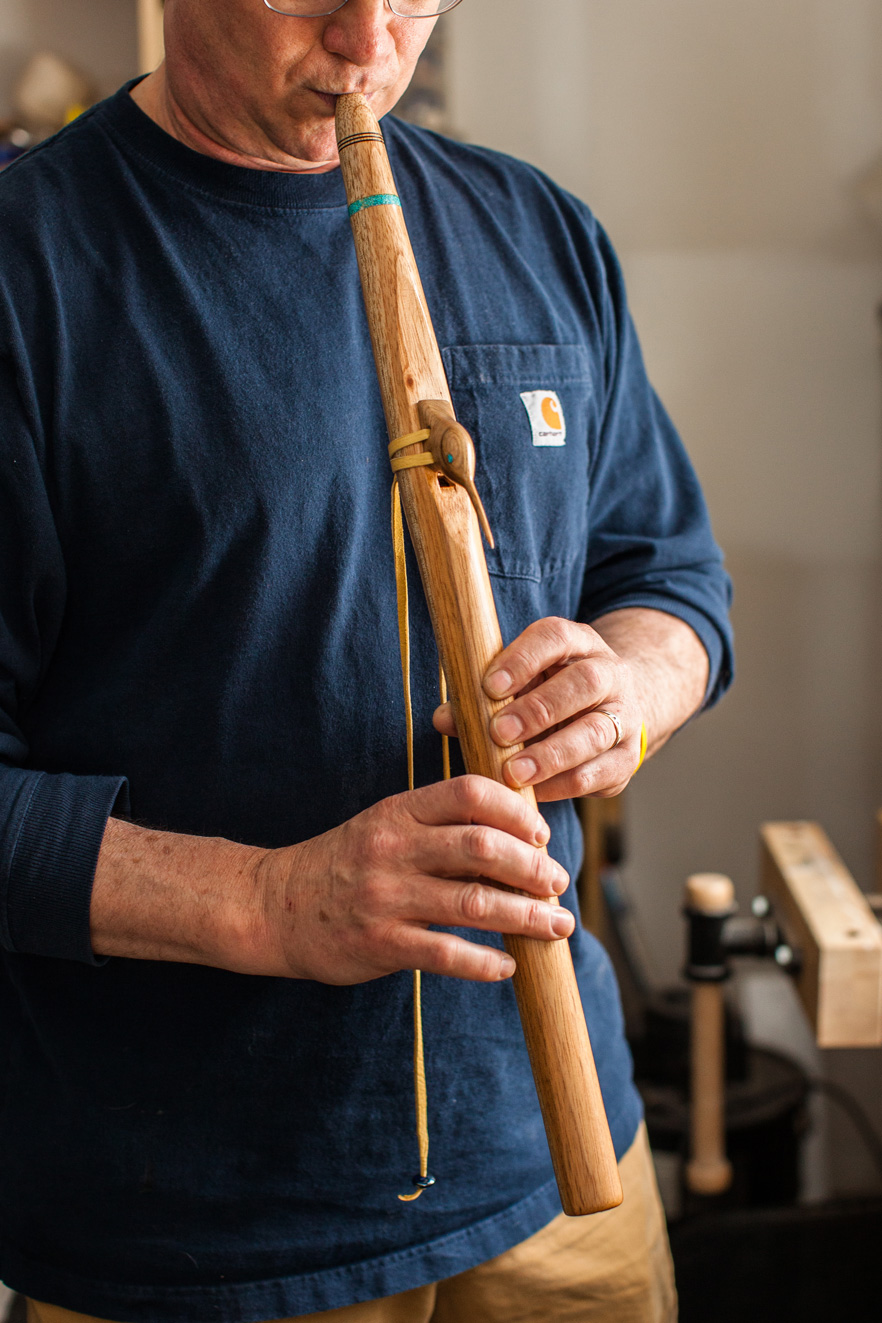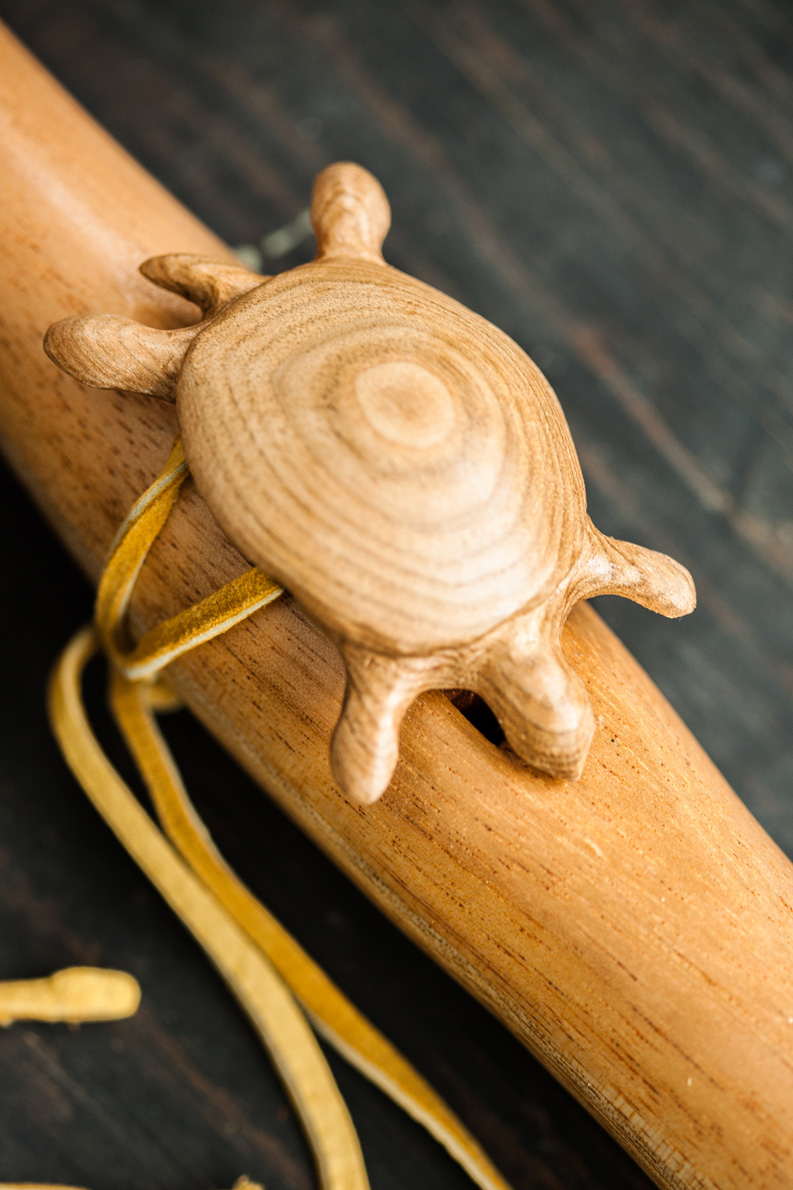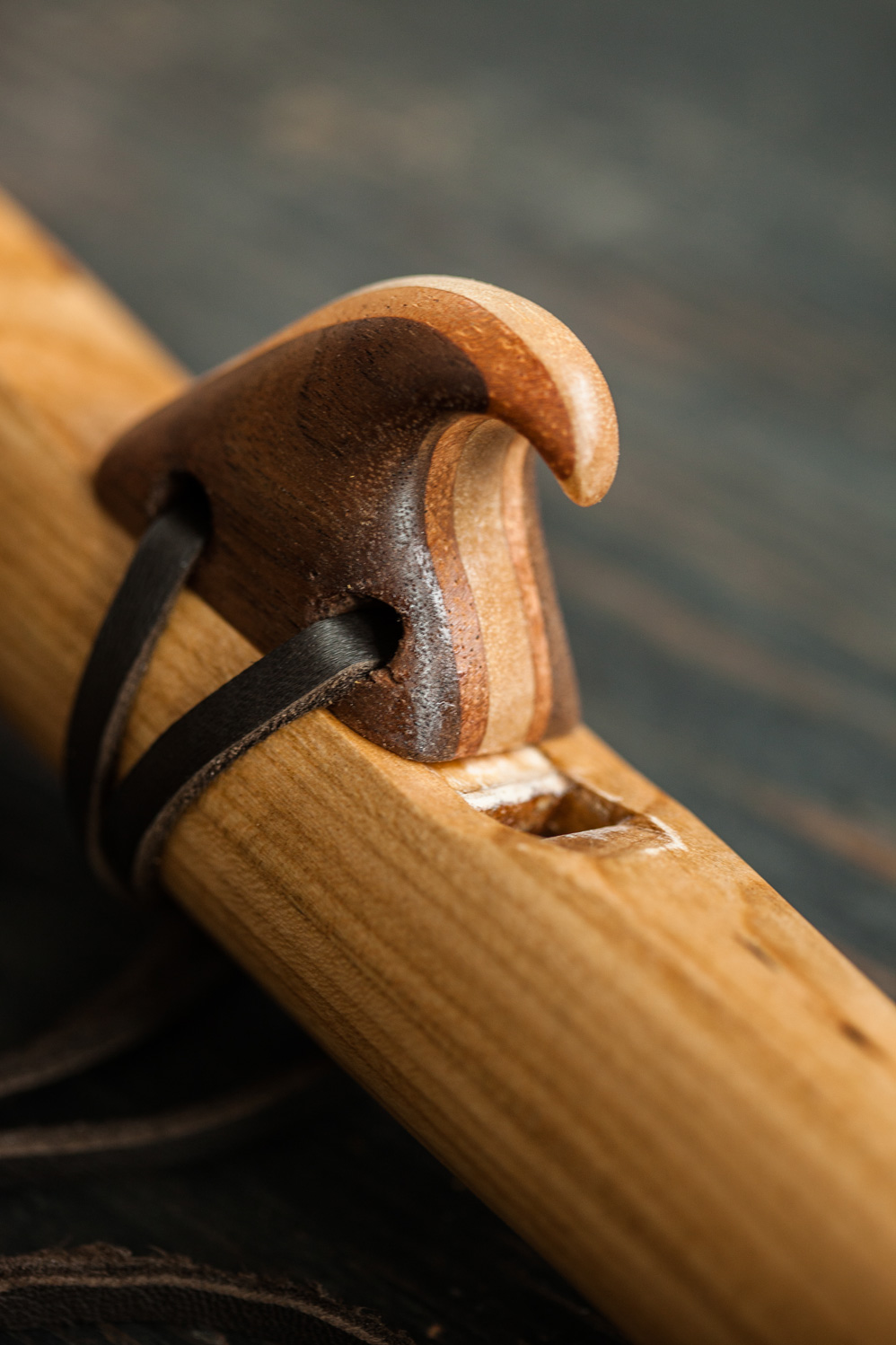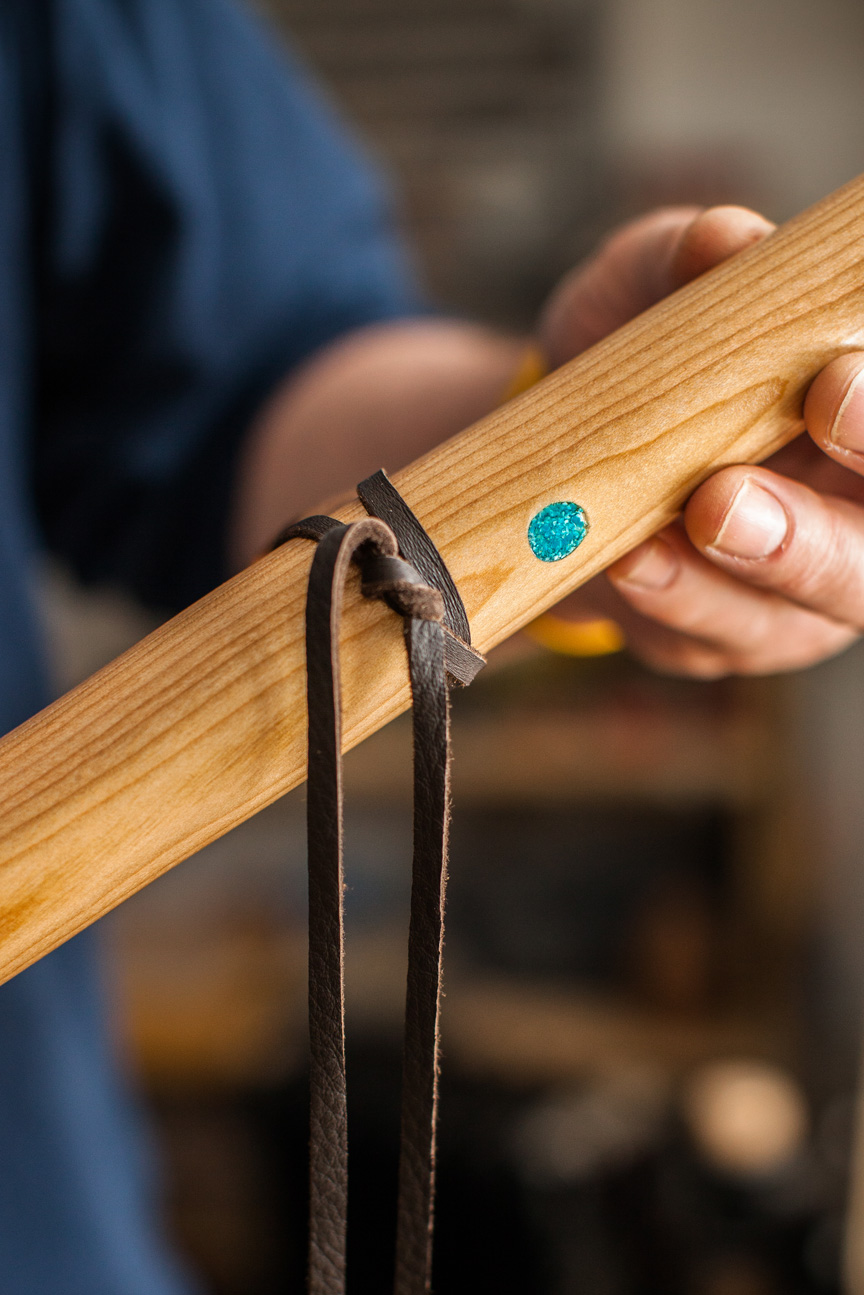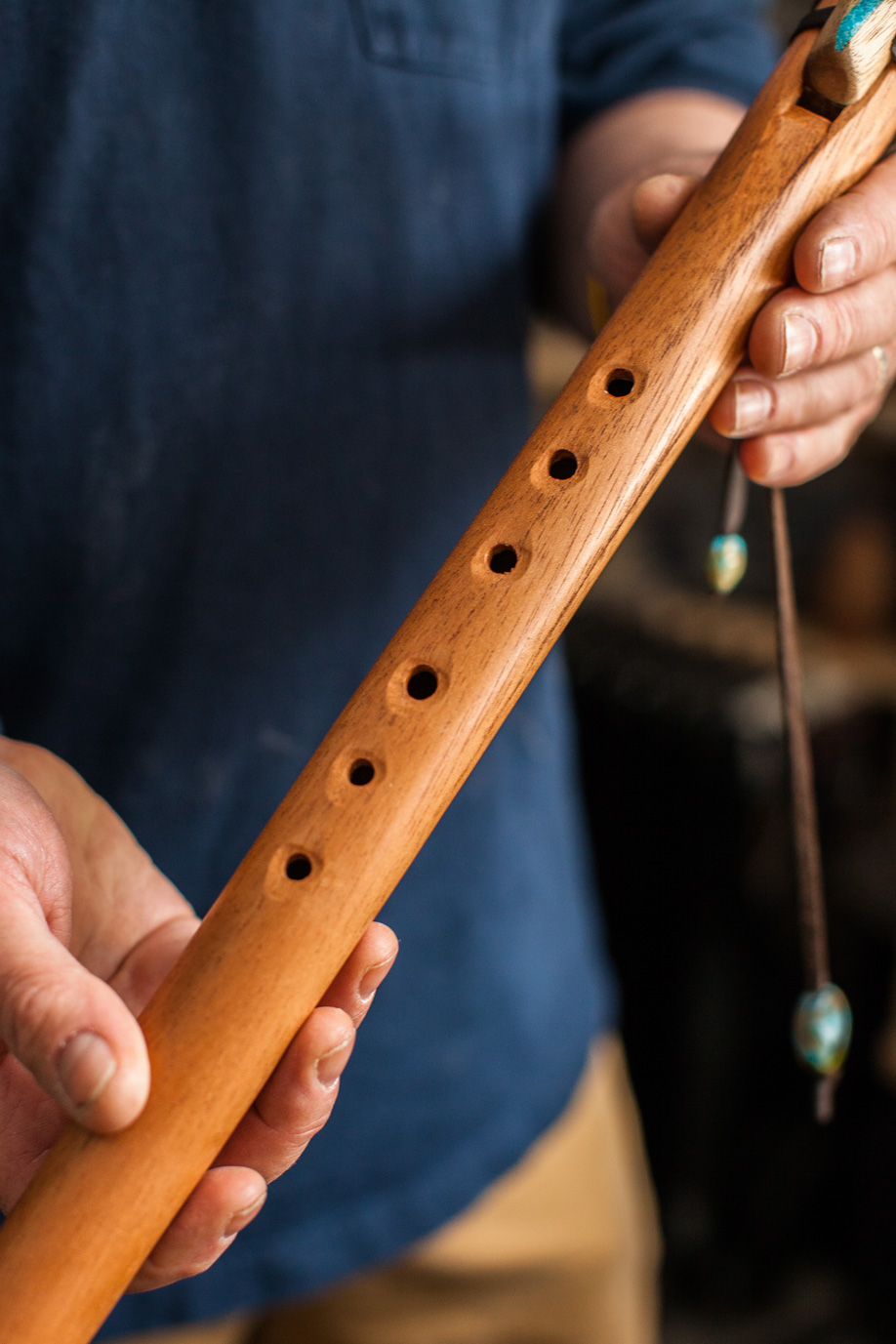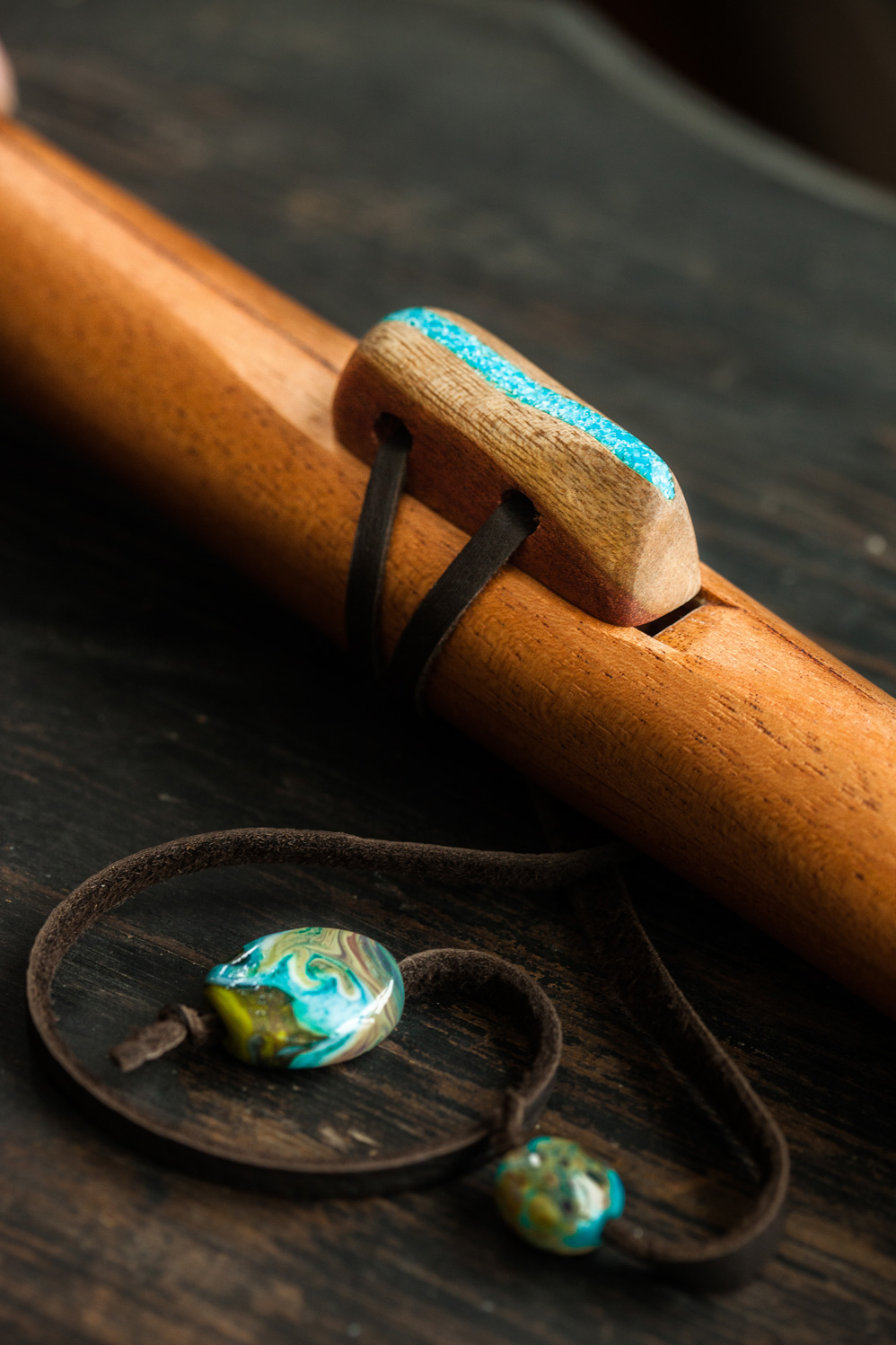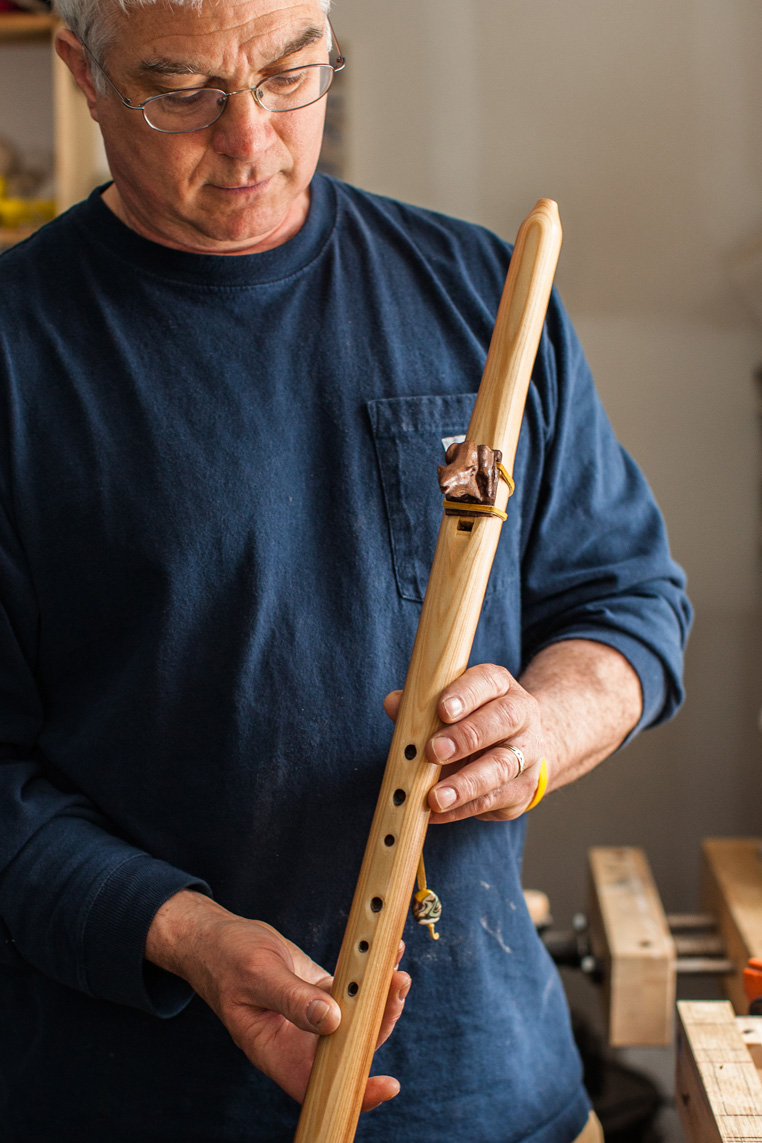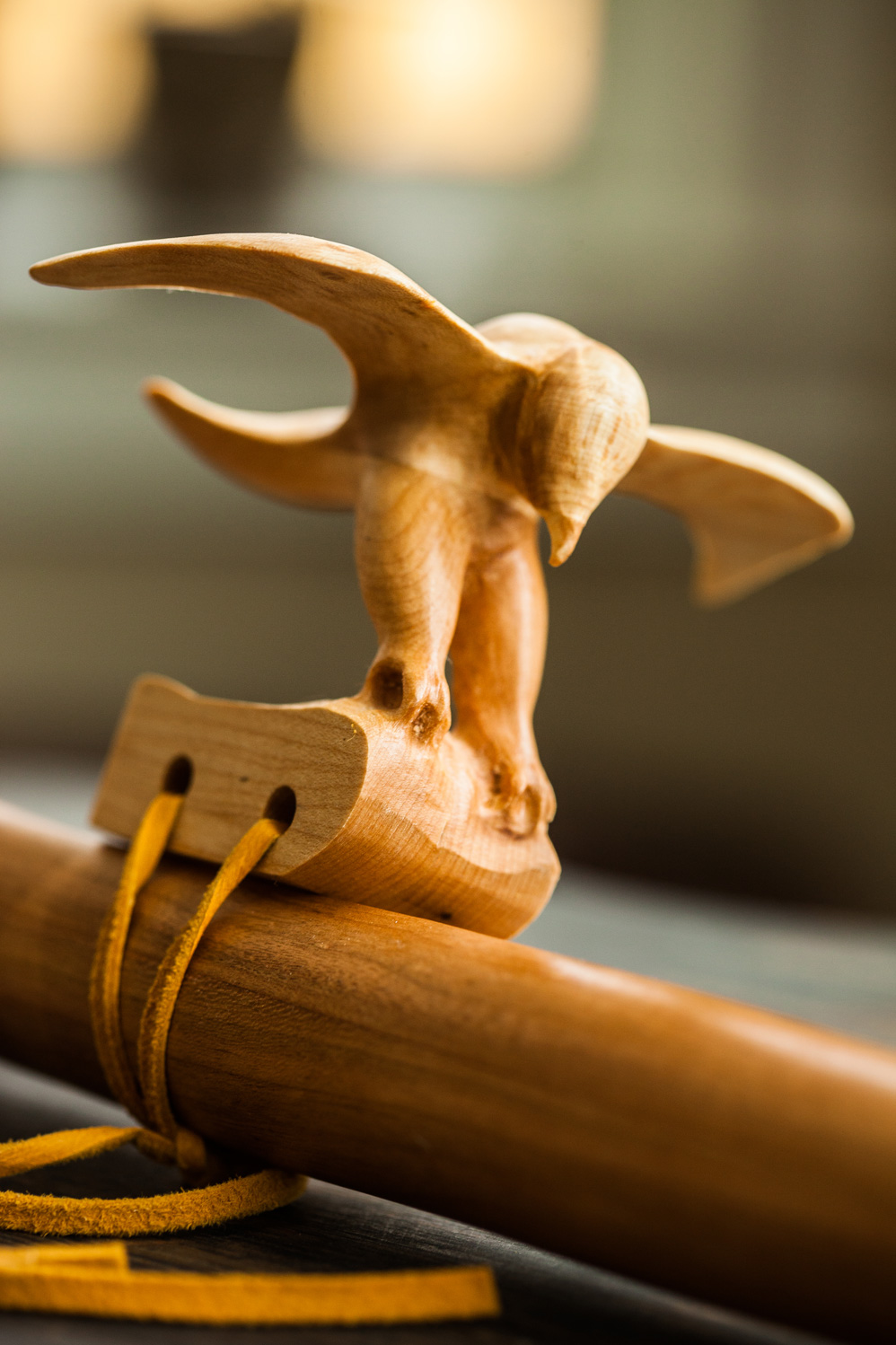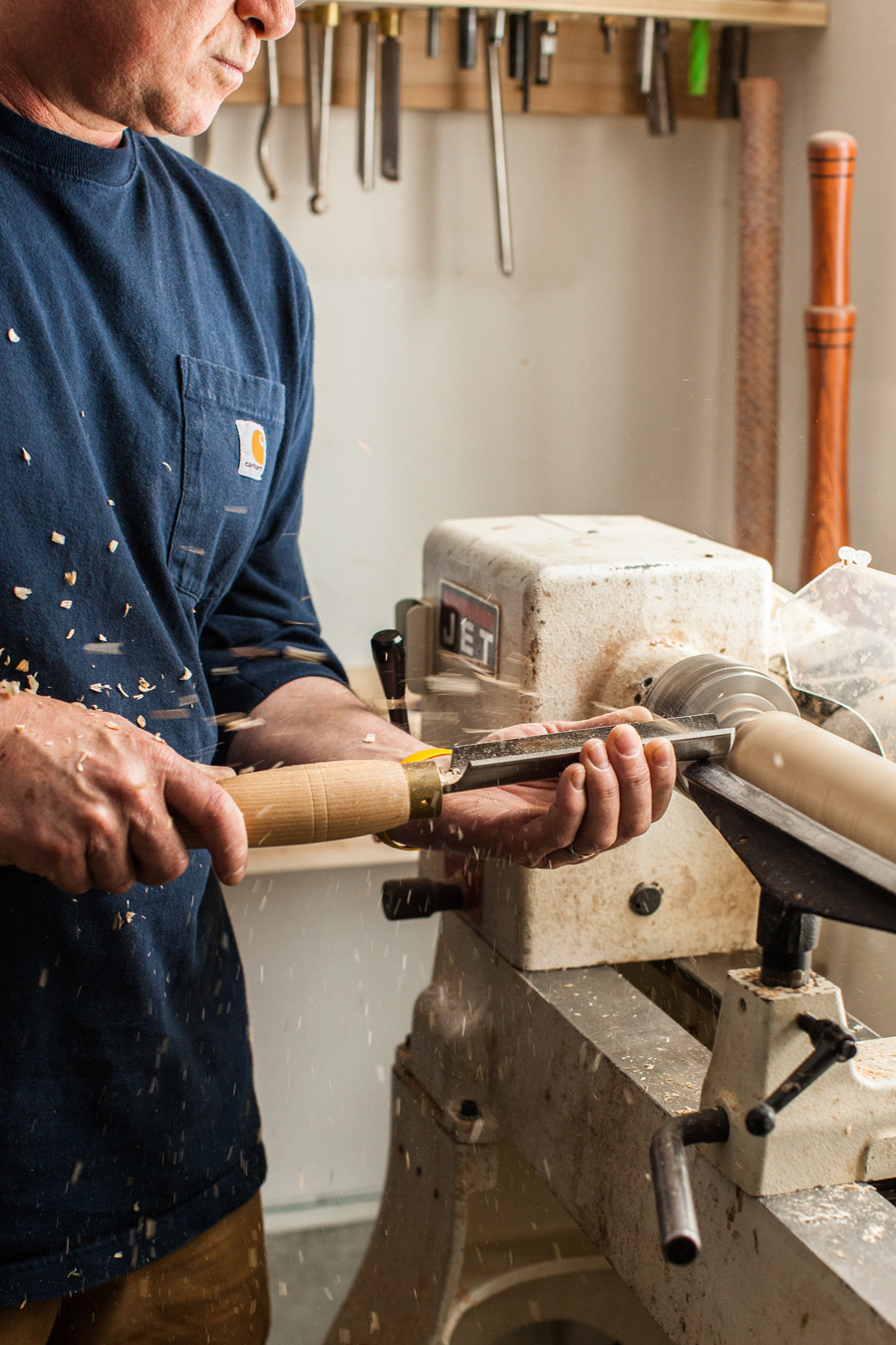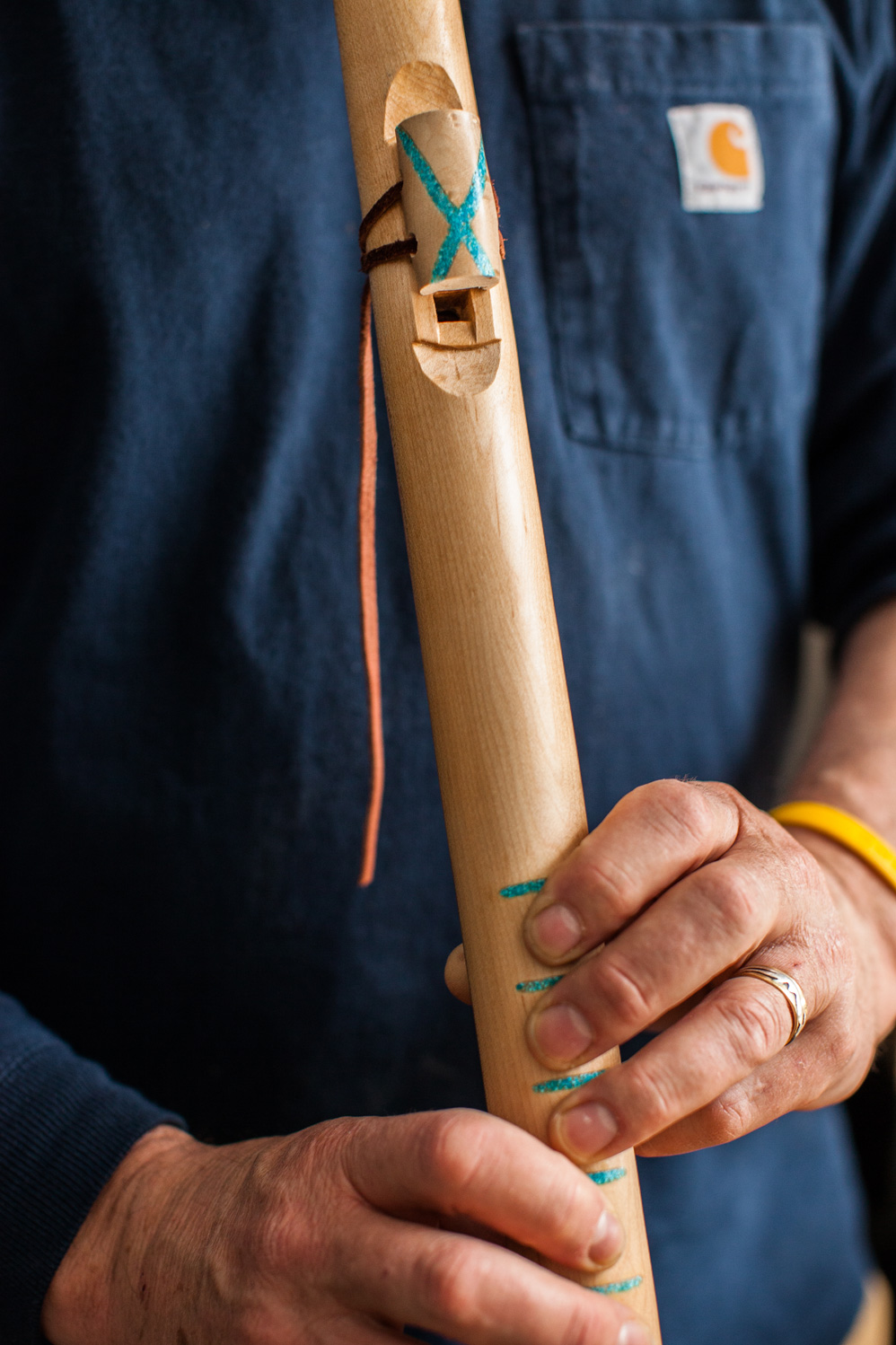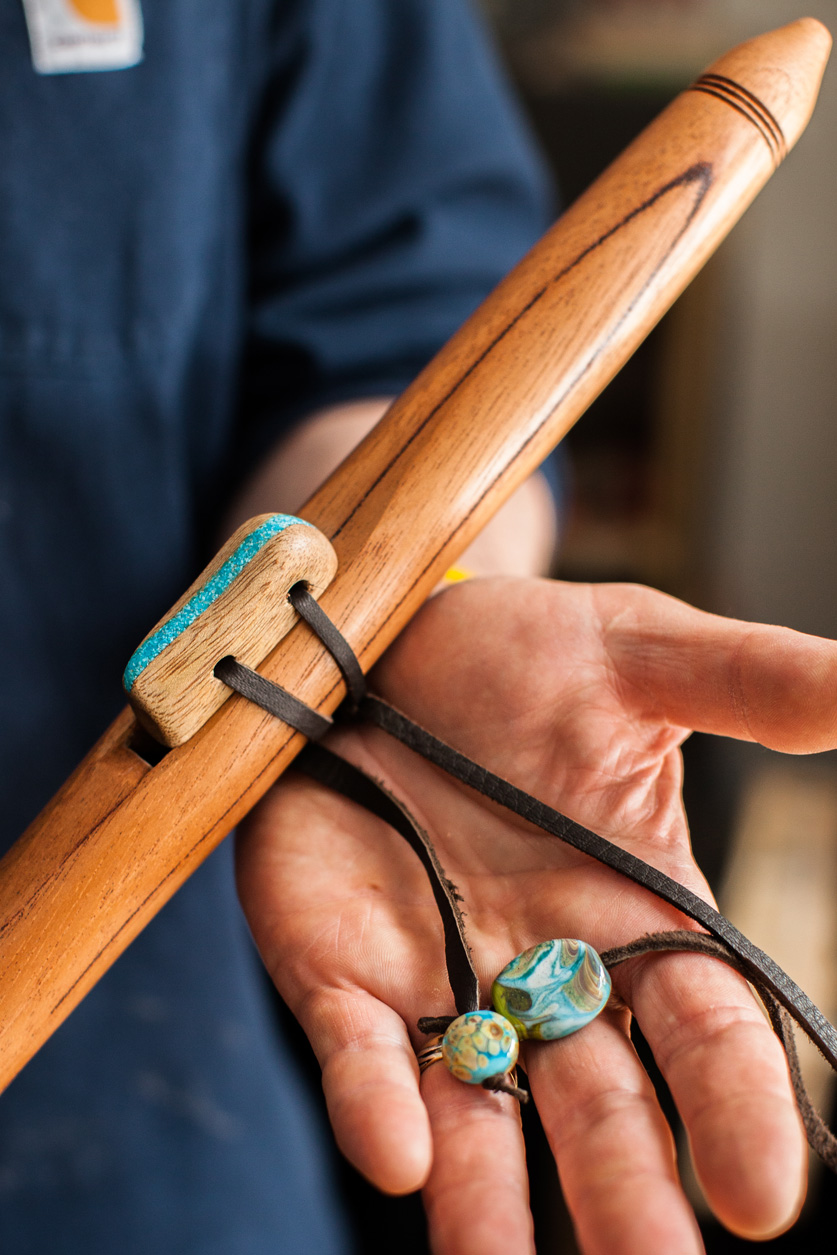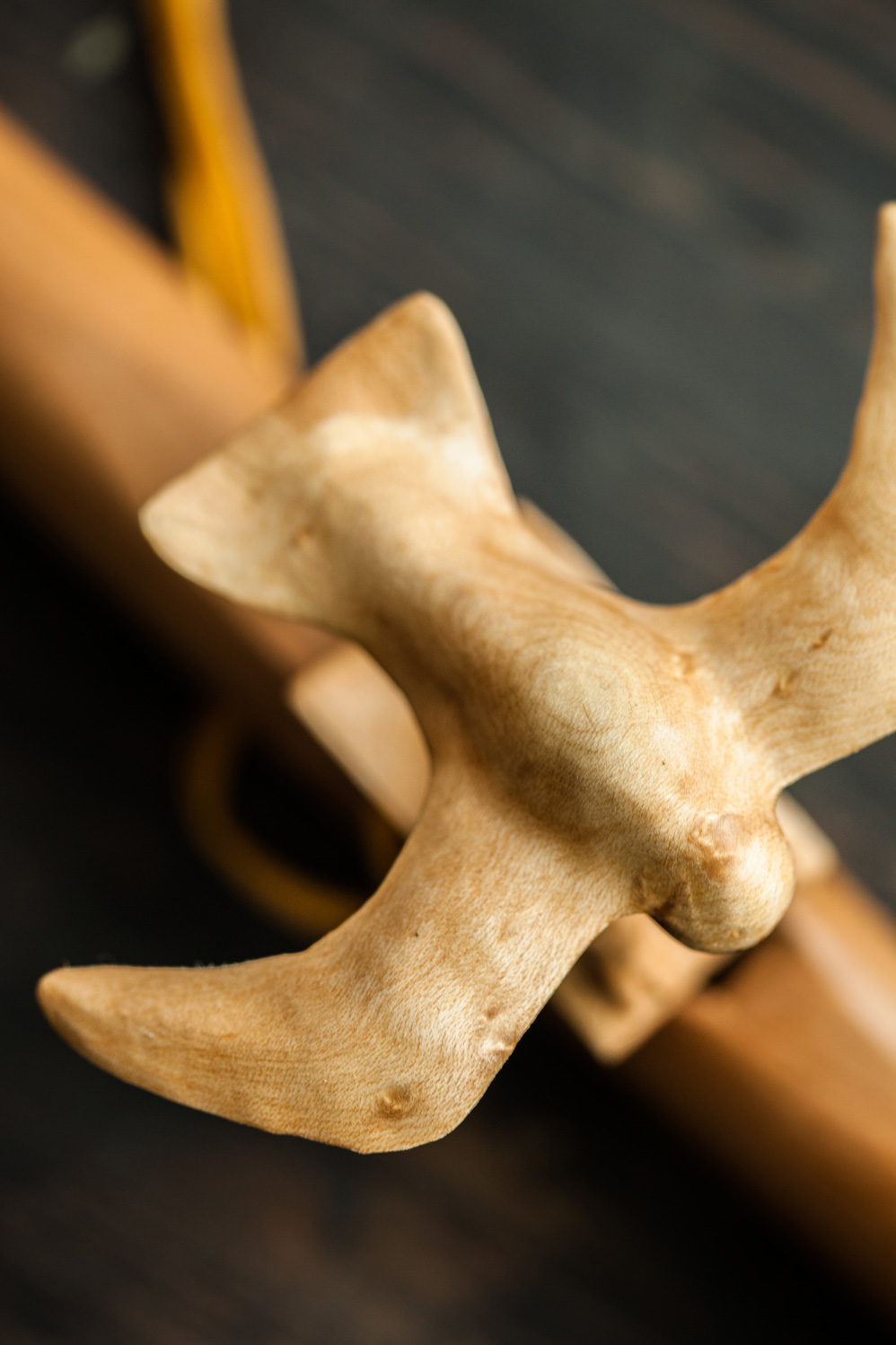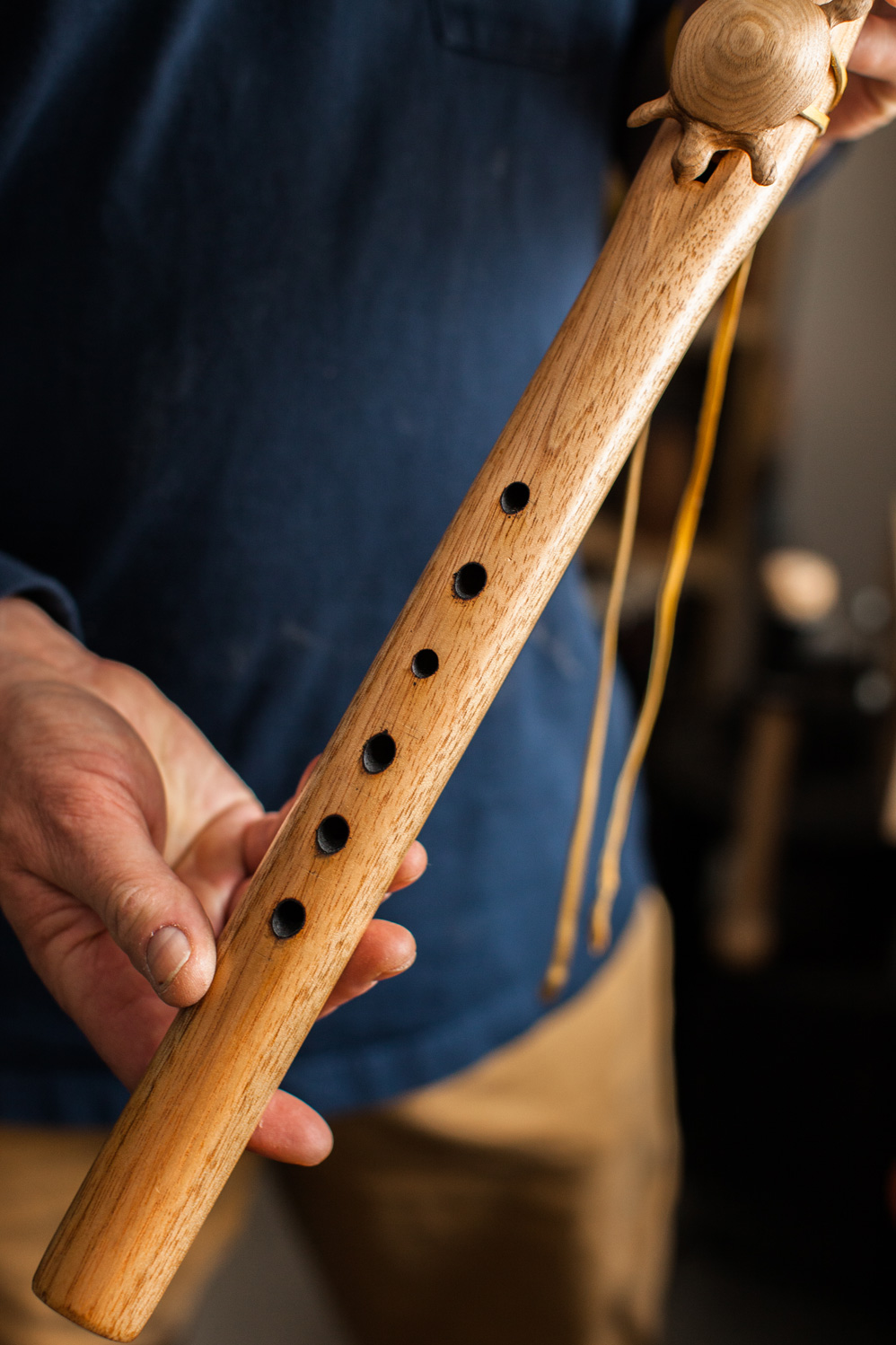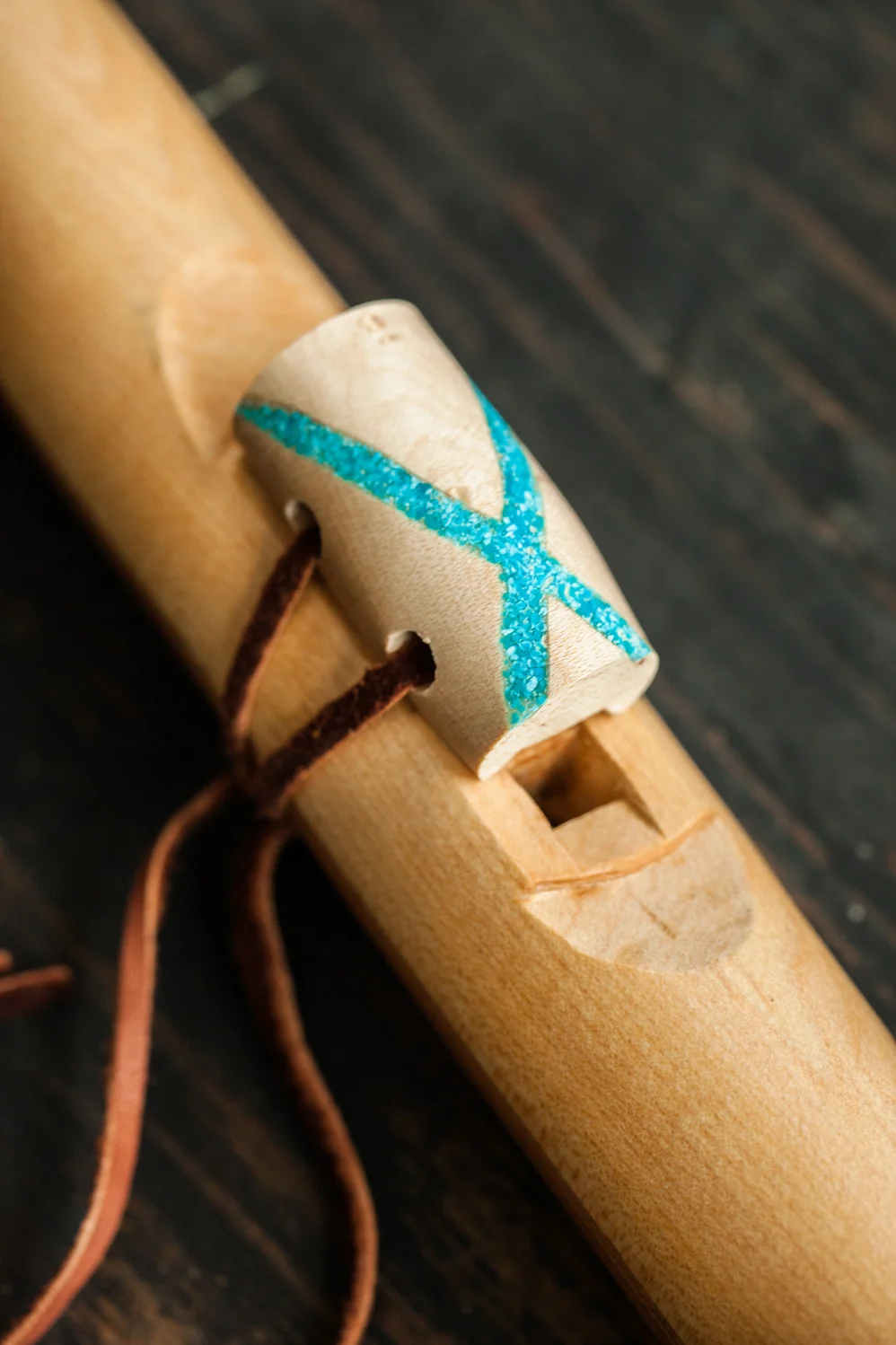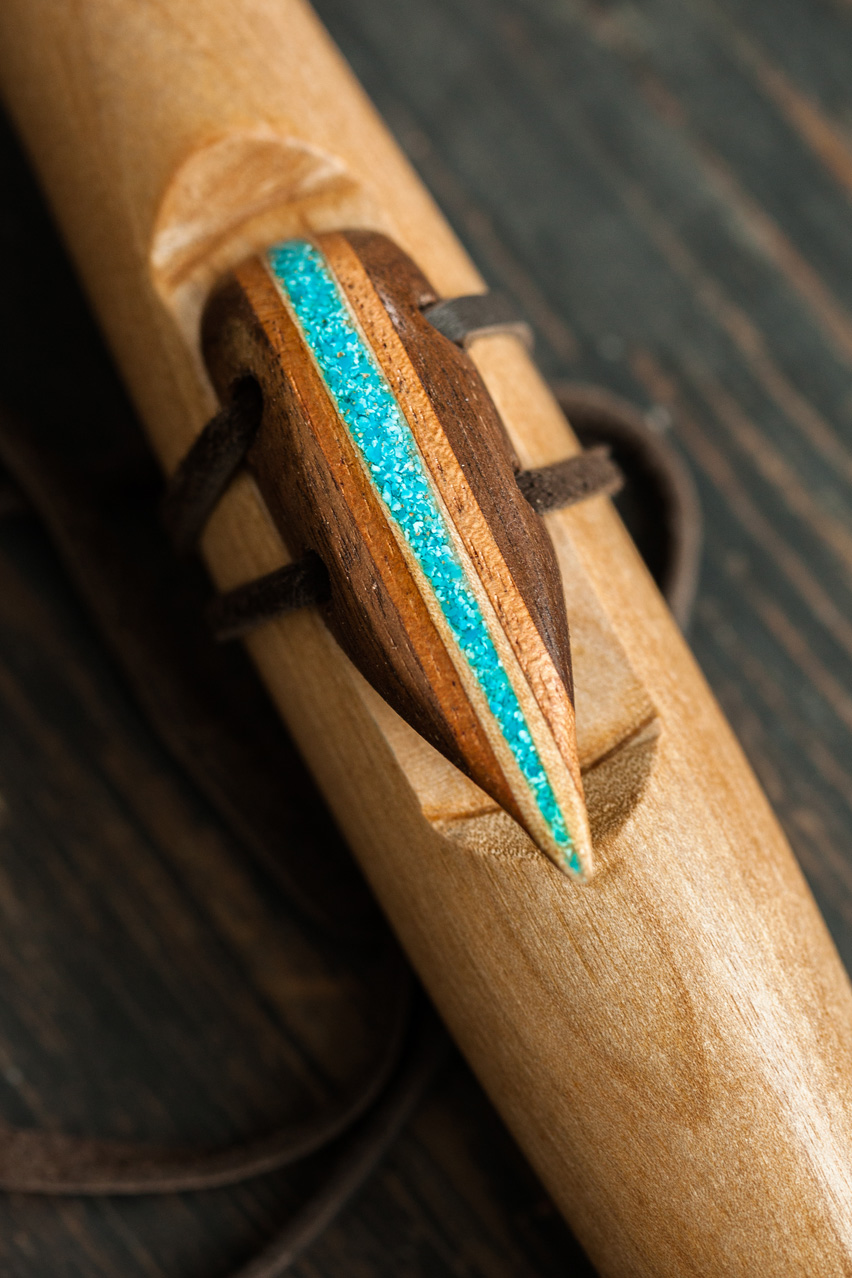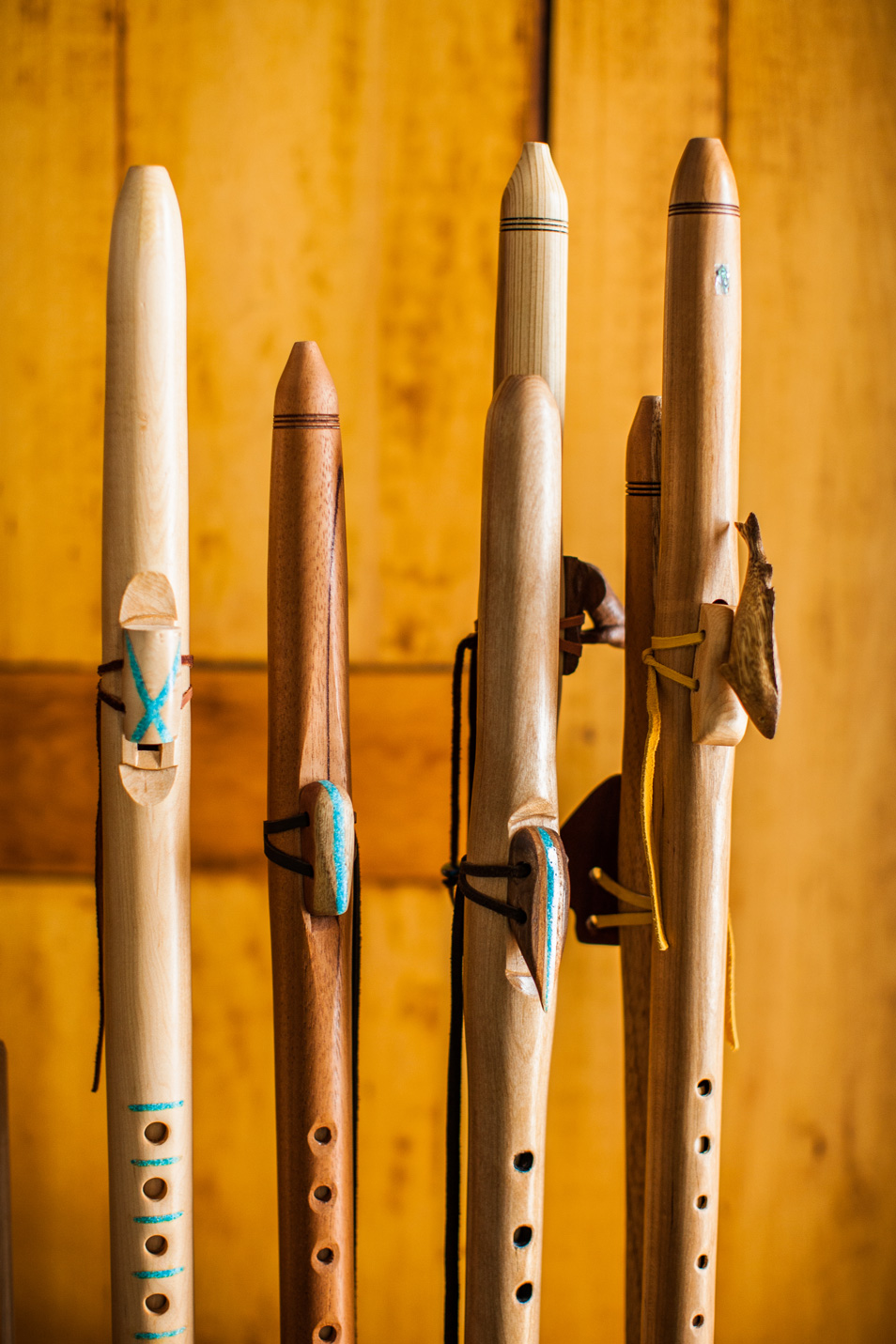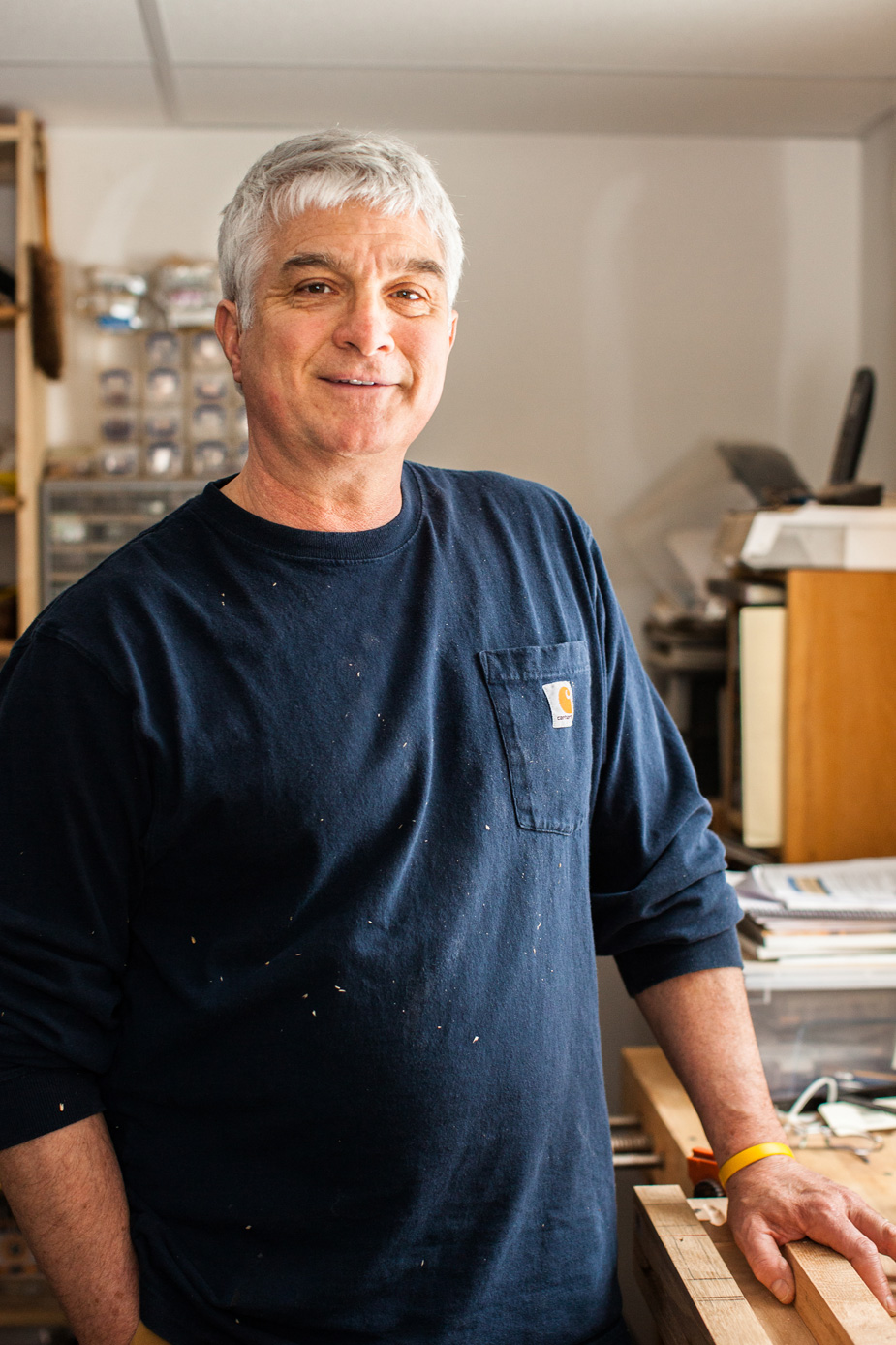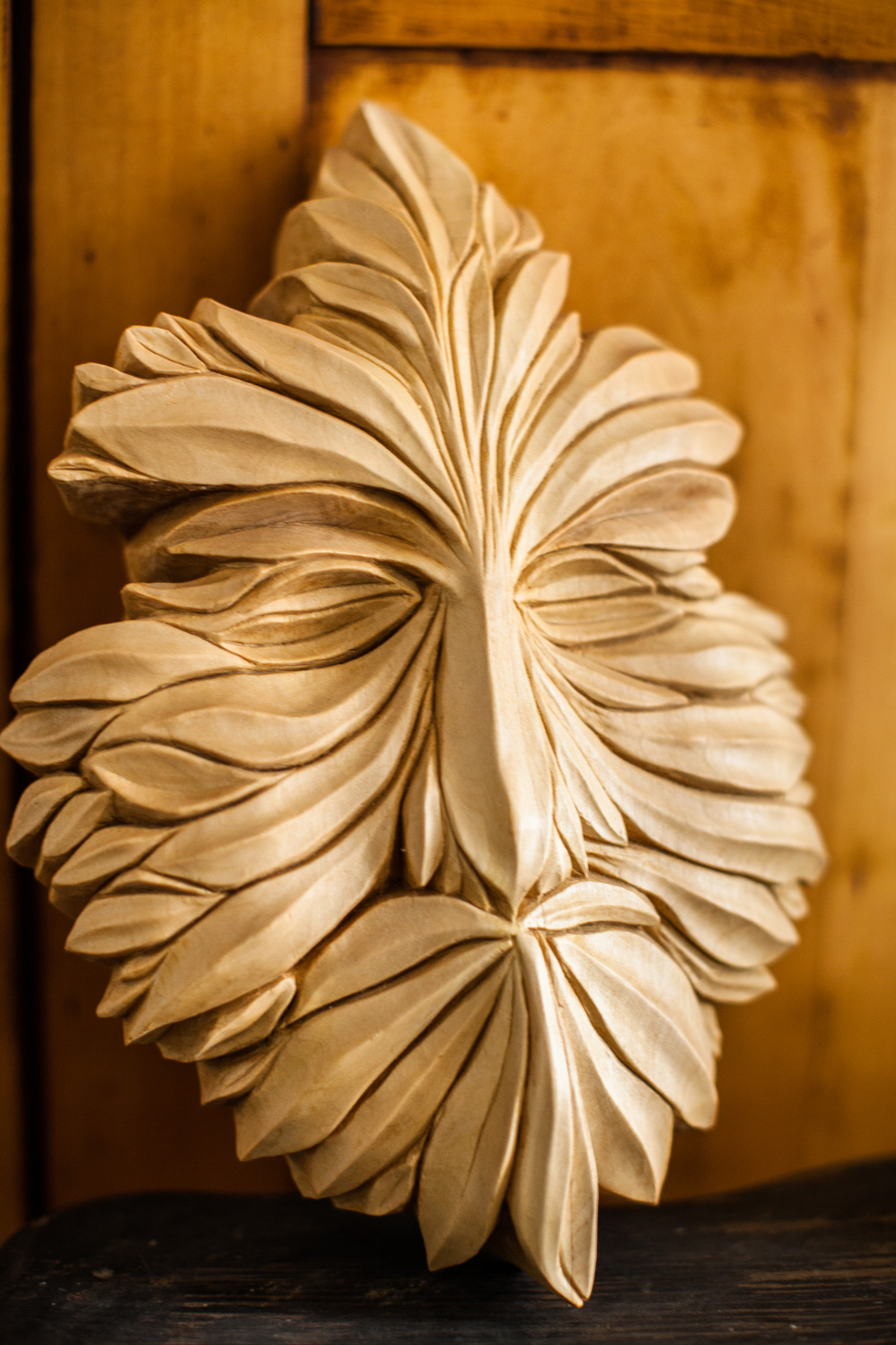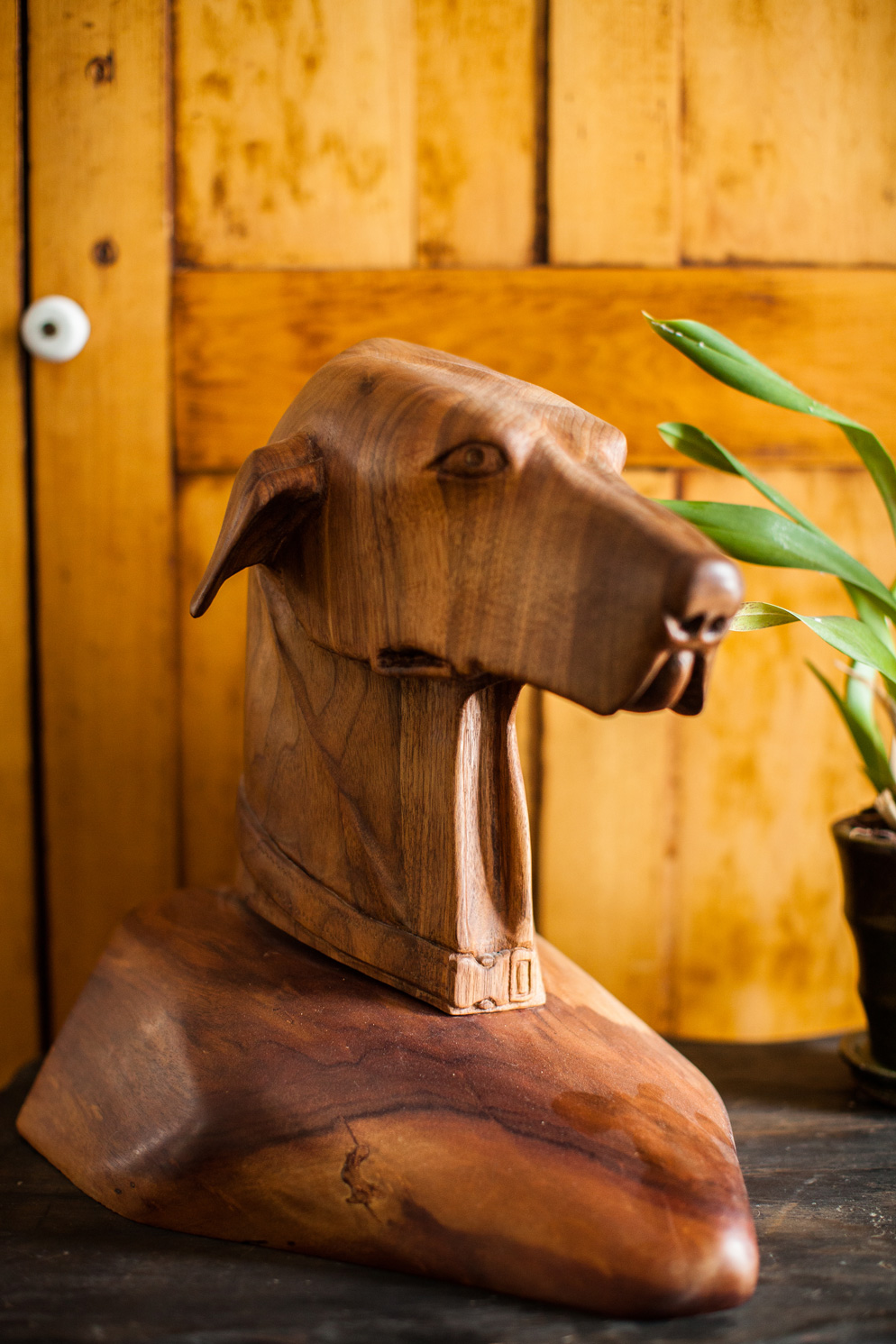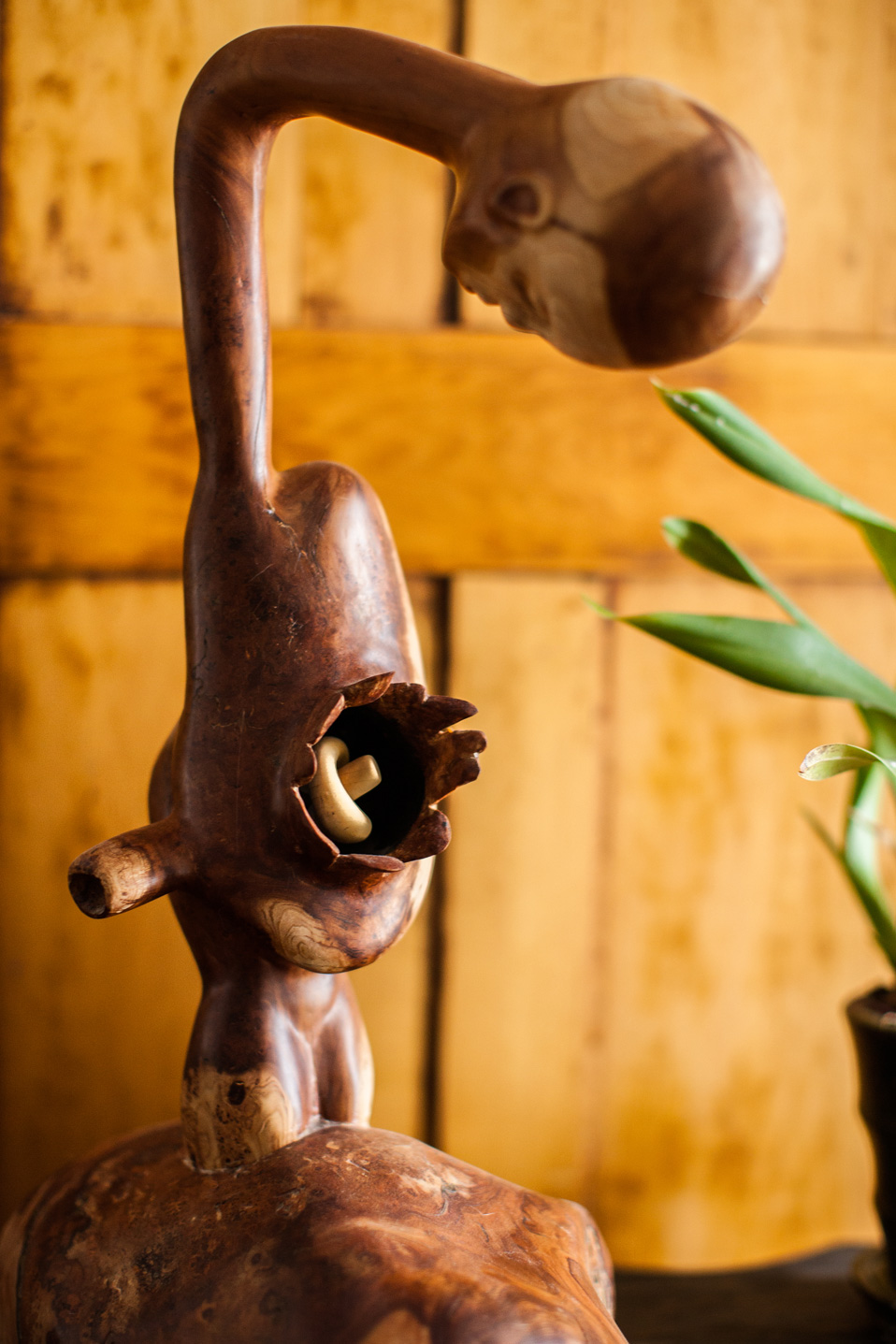An Interview With Ben Thompson
Changing paths in life is never a straightforward thing. Maybe there are financial responsibilities that must be accounted for. Maybe there are people who have certain expectations and whose disappointment would be painful to endure. Maybe it is just plain scary and uncertain and difficult to know where to begin.
I recently met Ben Thompson, a wood craftsman based out Freeport, Maine who carves beautiful traditional flutes. As I learned more about his story, I was so inspired and just had to know more, and he graciously agreed to be interviewed!
Meet Ben Thompson…physician, craftsman, wood carver, poet, survivor.
Ben, how did you come to be a carver and craftsman of flutes?
I have always loved working with wood. When I was in high school, I took a sculpture class and most of our work was in wood, so I learned to carve there. I made a few sculptures occasionally after that, but once I began medical school, my creativity and art was mostly confined to gifts or small projects.
I practiced medicine for 26 years, but after two bouts with cancer, I decided it was time to retire from medicine and pursue wood carving with more focus. I began by taking some classes with Chris Pye at The Center for Furniture Craftsmanship in Rockport, Maine. There I met some other woodcarvers and eventually several of us created Casco Bay Woodsculptors. We had a show at the Dan Kaney Gallery and then one at Harmon & Barton’s gallery in Portland and these experiences really stoked my creative fire for woodcarving.
In the spring of 2014, I happened to go to Montana to visit a friend. He had several native flutes and loved them. I was eager to try carving one myself and see how it would go. Eventually I was able to make a flute that looked beautiful and had a nice tone. I have this first flute as a gift to the friend in Montana who had inspired the endeavor. While it may not have been his best flute, he was touched by the time and energy I’d put into creating it. I really enjoyed making it and I decided to continue!
What does the process of creating one of your flutes entail?
I love the flute making process because it has so many different elements. It has some very technical woodworking skills, lathe turning, carving, and then music and tone, all rolled onto one creation.
When I begin work on a flute, my first consideration is tone, as that is the most important element. When I first began crafting flutes, I initially wanted to create these really cool looking flutes and so started by using harder woods, such as maple and cherry. I found that these woods created a tonal quality that was harsher than I wanted, so I began using cedar. Some of the flutes I create now are all cedar and have a beautiful tone, and I’ve begun adding elements and accents in the hardwoods as well to capture and include some of their look.
My process begins by choosing wood that appeals to me. I cut it into two pieces and then use a jig and router to hollow out half of the bore and slow air chamber in each. I glue those two pieces together to create a rectangular shape with a hollow bore in the center. After sealing the bores, I cut a mortise hole for the “true sound hole” and drill a hole from the slow air chamber to the area that I will carve as the windway. I then turn the piece on a lathe to form the cylinder, put a finish on it, and then cut the windway, a narrow, shallow channel between the slow air chamber and the true sound hole. What creates the sound of the flute is the ribbon of air moving over the split edge opposite that windway channel and creating turbulence and a sound wave.
Once I get a base tone with that process, I put in tuning holes. I begin at the bottom and work my way up the flute until I have six holes that form a pentatonic minor scale, the typical scale of the native style flute. After applying final coats of finish to the flute, I hand carve the unique "fetish" that will complete it. The "fetish" is a decorative element that also serves to adjust and allow the player to fine-tune his notes.
Can you tell me a little bit about the tradition that your flutes are a part of?
This style of flute has been made for hundreds of years by native people around the globe. The first known images of the flute playing Kokopelli figure that is common in the southwest appear on Hohokam pottery dated to between 750 and 850 CE. The flute that the Kokopelli figure is playing is a simple straight flute, not dissimilar to the flutes I am making today. Traditionally, the flutes were made of river cane which was hollow, but in more recent times with more modern tools they can be made out of any type of wood. The really nice sounding flutes today are made mainly of western red cedar.
The animal “fetishes” can have special and specific meaning to many native peoples of the Americas. I prefer to allow those who buy the flutes I create to assign whatever meaning they choose to them. For example, my brother-in-law loves horses and they have a very special place in his heart, so I carved a horse fetish for him as a gift.
Do you do other kinds of woodwork or sculpture?
I do some 3-D sculpture and woodturning and am able to do letter carving in wood as well, but I really enjoy making the flutes so I have been focusing more on that recently.
Do you have other creative pursuits that are meaningful to you? Can you tell me a little bit about what inspires you and feeds your creativity?
I also took up poetry back in medical school and so my other creative pursuits at the moment are gardening, poetry, and simply living a rich life. Once you have had cancer a couple of times (and my wife has had cancer twice as well), living a rich, full life becomes the most satisfying pursuit because you never know when it will be snatched from you. Just seeing a beautiful piece of wood, or something beautiful in nature, or hearing nice music all inspire me. Every day that I am alive inspires me because I realize now how precious each day is and how important it is to appreciate every moment of every day. My cancer has really been a great gift that way. It really forces you to appreciate the beauty of all the little things in life and at the same time not worry so much about all the little things in life, such as which way the toilet paper roll goes on the toilet paper holder. You just begin to look at what is really important to you, and try not to get caught up in the more mundane. Often easier said than done, of course!!
-------
Ben, thank you so much for taking the time to share your story!
To learn more about Ben or to purchase one of his incredible creations, please visit his website!


